UNLOCKING THE DIGITAL FRONTIER

HOW INNOVENTURES EDUCATION IS PIONEERING THE FUTURE OF LEARNING

ISSUE 56

24 GUIDING THROUGH THE MAZE
30 GUARDING THE CHAIN
48 PRODUCTS

MICROSOFT AND ORACLE EXPAND PARTNERSHIP

G42 AND MICROSOFT UNLOCK NEW OPPORTUNITIES FOR DIGITAL TRANSFORMATION
CISCO SECURE APPLICATION DELIVERS BUSINESS RISK OBSERVABILITY FOR CLOUD NATIVE APPLICATIONS

CONTENTS 6 NEWS
FEATURES 16 SPEEDING TOWARD SUCCESS 20 BUILDING THE FUTURE 22 LEADING THE WAY TO DIGITAL SUCCESS 28 UNLEASHING INDUSTRIAL DATA 34 A PATHWAY TO AIOPS 36 BUILDING BLOCKS OF XDR 38 REVOLUTIONISING EDUCATION 18 PIONEERING INNOVATION 40 RESHAPING BUSINESS COMMUNICATION
PUBLISHED BY INSIGHT MEDIA & PUBLISHING LLC 14 UNLOCKING THE DIGITAL FRONTIER
VIEWPOINTS INTERVIEWS 42 UNLOCKING BUSINESS SUCCESS 44 SUSTAINING INNOVATION 48 NAVIGATING CLOUD COMPLEXITY 3 CXO INSIGHT ME SEPTEMBER 2023
a cyber attack occurs every 14 seconds
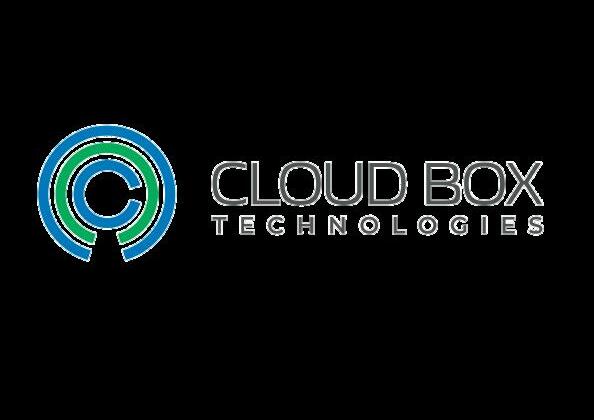


RAPID
END
ZERO
ROBUST
RANSOMEWARE PROTECTION INSIDER THREAT PROTECTION +9 heikh UAE
RESPONSE
POINT PROTECTION
TRUST
CYBERSECURITY
THE PERFECT STORM
Over the past decade, we have seen the confluence of three transformative forces set the stage for a new era in AI: massive data proliferation, scalable compute capacity availability, and innovation in machine learning (ML) techniques.
Together, these factors have created a tipping point for generative AI, ushering in a wave of creativity and potential that promises to reshape industries and transform processes.
Data has always been the lifeblood of AI, but in recent years, we’ve witnessed an unprecedented explosion in data. Generative AI thrives on this data. With more data at its disposal, it can better understand patterns, context, and nuances, creating more sophisticated and realistic outputs. Whether it’s generating human-like text, lifelike images, or even entire pieces of music, generative AI systems are becoming more proficient thanks to the sheer volume of data available.
The second pillar of this perfect storm is the unprecedented availability of scalable compute capacity. Cloud computing and specialised hardware, such as Graphics Processing Units and Tensor Processing Units, have transformed the AI landscape.
The third driving force in this AI renaissance is the
pace of innovation in ML techniques. Researchers and practitioners are continuously developing and refining algorithms that make generative AI more capable and versatile.
Enterprise adoption of generative artificial intelligence (AI) is still nascent but is poised for rapid expansion as organisations uncover new use cases for this technology.

Bloomberg Intelligence forecasts a staggering 42% annual growth rate for the generative AI market over the next decade, projecting an escalation from $40 billion in 2022 to $1.3 trillion.
Generative AI promises to empower IT teams in multiple ways - from writing software code and networking scripts to troubleshooting, process automation, and aiding in project management and planning.
Yet, realising the true potential of generative AI requires access to best-in-class models, a secure and private computing environment, and costeffective, low-latency ML infrastructure tailored for the task.
Given the hype around generative AI now, CIOs need to clearly understand its practical business applications and exercise a degree of prudence when deploying it in real-world scenarios.
EDITORIAL
Published by Publication licensed by Sharjah Media City @Copyright 2023 Insight Media and Publishing Managing Editor Jeevan Thankappan jeevant@insightmediame.com +97156 - 4156425 Sales Director Merle Carrasco merlec@insightmediame.com +97155 - 1181730 Operations Director Rajeesh Nair rajeeshm@insightmediame.com +97155 - 9383094 While
Production Head James Tharian jamest@insightmediame.com +97156 - 4945966 Administration Manager Fahida Afaf Bangod fahidaa@insightmediame.com +97156 - 5741456 Designer Anup Sathyan 5 CXO INSIGHT ME SEPTEMBER 2023
the
publisher
has made all efforts to ensure the accuracy of information in this magazine, they will not be held responsible for any errors
MICROSOFT AND ORACLE EXPAND PARTNERSHIP
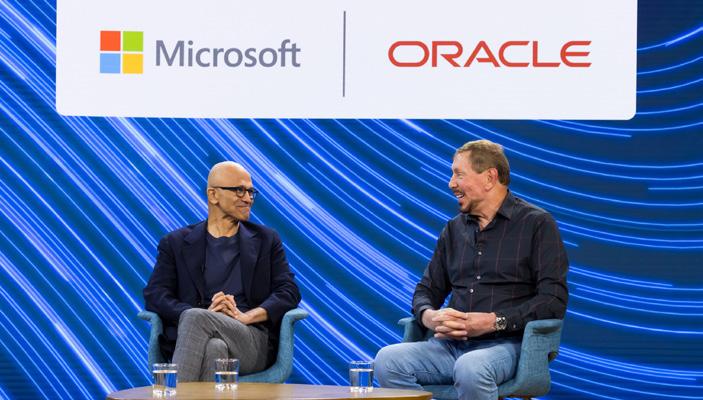
Oracle and Microsoft announced Oracle Database@Azure, which gives customers direct access to Oracle database services running on Oracle Cloud Infrastructure (OCI) and deployed in Microsoft Azure datacenters.
Oracle Database@Azure delivers all the performance, scale, and workload availability advantages of Oracle Database on OCI with the security, flexibility, and best-in-class services of Microsoft Azure, including best-inclass AI services like Azure OpenAI. This combination provides customers with more flexibility regarding where they run their workloads. It also provides a streamlined environment that simplifies cloud purchasing and management between Oracle Database and Azure services.
With the introduction of Oracle Database@Azure, Oracle and Microsoft are helping customers accelerate their migration to the cloud, so they can modernise their IT environments and take advantage of Azure’s infrastructure, tooling, and services. Customers will benefit from:
More options to move their Oracle databases to the cloud;
The highest level of Oracle database performance, scale, and availability, as well as feature and pricing parity;
The simplicity, security, and latency of a single operating environment (data center) within Azure;
The ability to build new cloud-native applications using OCI and Azure technologies, including Azure’s best-inclass AI services;
The assurance of an architecture that is tested and supported by two of the most trusted names in the cloud.
“We have a real opportunity to help organisations bring their mission-critical applications to the cloud so they can transform every part of their business with this next generation of AI,” said Satya Nadella, Chairman and CEO, Microsoft. “Our expanded partnership with Oracle will make Microsoft Azure
the only other cloud provider to run Oracle’s database services and help our customers unlock a new wave of cloudpowered innovation.”
“Most customers already use multiple clouds,” said Larry Ellison, Oracle Chairman and CTO. “Microsoft and Oracle have been working together to make it easy for those customers to seamlessly connect Azure Services with the very latest Oracle Database technology. By collocating Oracle Exadata hardware in Azure datacenters, customers will experience the best possible database and network performance. We are proud to partner with Microsoft to deliver this best-inclass capability to customers.”
Multicloud Made for Customers
The new service delivers a fully integrated experience for deploying, managing, and using Oracle database instances within Azure. It enables organisations to drive breakthroughs in the cloud using their existing skills to leverage the best of Oracle and Microsoft capabilities directly within the Azure portal.
The new service is designed to eliminate customers’ biggest challenges in adopting multicloud architectures, including disjointed management, siloed tools, and a complex purchasing process.
As a result of this expanded partnership, customers will have the choice to deploy their Azure services
with their fully managed Oracle Database services all within a single datacenter, including support for Oracle Exadata Database services, Oracle Autonomous Database services, and Oracle Real Application Clusters (RAC). Oracle and Microsoft have also developed a joint support model to provide rapid response and resolution for mission-critical workloads.
Additionally, Oracle and Microsoft have significantly simplified the purchasing and contracting process. Customers will be able to purchase Oracle Database@Azure through Azure Marketplace, leveraging their existing Azure agreements. They will also be able to use their existing Oracle Database license benefits including Bring Your Own License and the Oracle Support Rewards programme.
“As we continue our digital transformation through innovation and technology, interoperability across cloud service providers to enable safe, secure, and rapid financial transactions for our 40 million customers is paramount,” said Mihir Shah, enterprise head of data, Fidelity Investments. “The announcement displays how industry leaders Microsoft and Oracle are putting their customers’ interests first and providing a collaborative solution that enables organisations like Fidelity to deliver best-in-class experiences for our customers and meet the substantial compliance and regulatory requirements
NEWS
6 CXO INSIGHT ME SEPTEMBER 2023
with minimal downtime.”
“Data is the lifeblood of any business, and the cloud is the best way to analyse it so that insights become actionable,” said Magesh Bagavathi, senior vice president and global chief technology officer, PepsiCo. “As one of the largest food and beverage companies in the world with a market value of over 200 billion U.S. dollars, the ability to run our mission-critical systems and associated data in the cloud with Oracle Database@Azure gives us a scaled strategic advantage across our global operations.”
“We are looking to our technology partners to support Vodafone’s strategic focus on customers, simplicity, and growth across Europe and Africa,” said Scott Petty, Chief Technology Officer, Vodafone. “This new offering from Oracle and Microsoft does that by enabling us to deliver innovative and differentiated digital services faster and more costeffectively to our customers.”
“As a global leader in the financial services industry, Voya has harnessed the power of digital transformation to help provide the best experience for our customers and employees. As we continue to bring our business applications to the cloud, cloud partnerships have the potential to help the entire industry maintain better security, compliance, and performance, helping to accelerate the development of new technology products, solutions, and services that enhance customer experience and help achieve better financial outcomes,” said Santhosh Keshavan, executive vice president and chief information officer, Voya Financial, Inc.
Oracle will operate and manage these OCI services directly within Microsoft’s data centers globally, beginning with regions in North America and Europe.
For more information on how to get started with Oracle Database@ Azure, visit our Microsoft and Oracle solutions page
BURJEEL HOLDINGS PLC AWARDS ORACLE HEALTH A AED 125 MILLION CONTRACT FOR A CUTTING-EDGE ELECTRONIC MEDICAL RECORD SYSTEM
Burjeel Holdings, a Healthcare Services Provider in the UAE and MENA listed on the Abu Dhabi Securities Exchange announced that its Board of Directors has approved entering into a strategic agreement with Oracle Health. The agreement will see the Group adopt Oracle Health’s Electronic Medical Record (EMR) solution in an effort to deliver significantly improved clinical outcomes, in addition to boosting operational and financial efficiencies.
As part of the agreement, Burjeel’s Board of Directors approved the award of an AED 125 million service contract to Oracle Health to establish the omnichannel and integrated EMR platform, enabling the integration of Burjeel’s clinical ecosystem across its network of healthcare assets.

As one of the first regional healthcare providers to adopt and implement a new Oracle Health EMR solution running on Oracle Cloud Infrastructure in the Oracle Cloud Dubai Region, Burjeel is well-positioned to continue delivering on its value-creation strategy of driving operational excellence through technology whilst also enhancing clinical outcomes and patient experience.
Commenting on Burjeel’s latest collaboration, Dr. Shamsheer Vayalil, Founder and Chairman, Burjeel Holdings PLC, said: “Collaborating with Oracle Health and bringing this new technology to our operations will offer caregivers a simplified yet comprehensive view of patient data to better inform care decisions and improve health outcomes. The patient experience across our healthcare ecosystem will be
streamlined, with less waiting time and more patient facetime with clinicians. And we’ll also be positioned to make strides in helping improve patient safety by ensuring the right information is available for our patients at the right time.”
With OCI’s performance, scalability and built-in security, Burjeel will be able to boost its operational and financial efficiency. In addition, Burjeel will also be able to support future care delivery approaches that require real-time care coordination and information exchange among multiple providers, patients, and locations. These benefits will provide the Group with significant opportunities to integrate its growing portfolio across MENA as it pursues its preferred capex-lite approach to network expansion.
“We’re working globally to help hospitals and health systems adopt technology that is digitised, open, and connected to help them solve some of their most complex challenges,” said Akram Sami Dhaini, vice president and managing director, Middle East and Africa, Oracle Health. “With the collaboration with Burjeel we continue our strong momentum in the region. Together, we can help Burjeel scale technology to meet its future needs, enhance operational and financial efficiency, and elevate the patient experience and engagement.”
Burjeel’s updated EMR system and integrated solution will be implemented across the Group through a structured threeyear rollout programme, which will see it launched across Burjeel Medical City, Burjeel Hospital, Abu Dhabi, and Burjeel Day Care Surgery Center during the pilot phase.
7 CXO INSIGHT ME SEPTEMBER 2023
G42 AND MICROSOFT UNLOCK NEW OPPORTUNITIES FOR DIGITAL TRANSFORMATION
G42 and Microsoft have embarked on the next phase of their ongoing strategic collaboration and announced a multifaceted plan to make available sovereign cloud offerings, co-innovate and deliver advanced AI capabilities, and expand the existing data center infrastructure in the UAE.

Microsoft’s sovereign cloud offering will allow UAE public sector and regulated industries to use new platform capabilities for securing sensitive data, providing access to the latest cloud and AI features available on Azure public cloud and helping them comply with local privacy and regulatory requirements. G42’s deep understanding of UAE sovereignty requirements and technical capabilities are central to customising the offering to help address customers’ specific needs.
By combining their expertise and existing capabilities, the companies will also focus on bringing cuttingedge, AI-enabled industry specific solutions for health and life sciences, energy, sustainability, and projects of national significance, for example, the COP28 conference being held in the UAE this year.
In addition to setting new milestones for public sector cloud computing security and innovation, G42 and Microsoft will further empower the wider technology ecosystem by delivering new in-country services, extending go-to-market opportunities for partners, and unlocking considerable value for Microsoft’s partner ecosystem to deliver industry-specific solutions to local entities. The partnership will also see Microsoft expanding its Azure services footprint in the UAE via Khazna Data Centers, a joint venture company between G42 and e&.
His Excellency Dr. Mohamed Al Kuwaiti, Head of Cyber Security for United Arab Emirates Government & Director of The National Data Center under The Supreme Council for the National Security, praised the
partnership between Microsoft and G42 stating that it will further contribute to creating a safer and more resilient digital environment that the public sector and regulated industries can utilise to enhance efficiency, as well as enable citizens to access services seamlessly, which will lead to flourishing innovation without compromising security and data privacy while bolstering the country effort to manage cyber risks effectively, ensure continued services to society, support economic growth, and uphold the reputation of the United Arab Emirates.
Peng Xiao, Group CEO of G42, described the joint sovereign cloud and AI offering with Microsoft as a significant step forward in the company’s mission to accelerate innovation and drive meaningful technological advancements across key sectors. “This strategic collaboration with Microsoft isn’t just about technology; it’s about creating a holistic ecosystem for societal resilience and growth. By combining our respective expertise and shared forward-thinking approach, we aim to not only transform industries but also create positive economic opportunities and lasting impacts on the well-being of individuals, communities, and society as a whole.”
Judson Althoff, Executive Vice President, and Chief Commercial Officer at Microsoft, noted that organisations all over the world are turning to advancements in generative AI technology to imagine new ways
to solve business, societal, and sustainability challenges. “Microsoft’s partnership with G42 will empower customers across the public sector with next-generation AI solutions built on the most trusted, comprehensive, and integrated cloud platform. With data privacy, security, and compliance as our core priorities, we have a unique opportunity to help organisations responsibly innovate for the benefit of citizens and residents across the UAE.”
Samer Abu-Ltaif, Corporate VP and President for Central and Eastern Europe, Middle East and Africa at Microsoft, said that the UAE has distinguished itself as an early adopter of the latest technologies, creating the ideal environment for developing and deploying cutting-edge solutions. This has given organisations across every industry the confidence to explore solutions that will drive their digital transformation agendas, improve efficiency and enhance agility. “By strengthening our collaboration with G42, we are supporting the UAE’s vision of empowering individuals and businesses to innovate AI solutions that not only drive sustainable economic growth but also tackle ongoing challenges in our communities.”
This announcement marks the first significant outcome since G42 and Microsoft announced their intention to partner earlier this year, in April 2023. The two companies plan to further strengthen their collaboration in the upcoming months.
NEWS
8 CXO INSIGHT ME SEPTEMBER 2023
NEW STUDY PREDICTS REVENUE INSIGHTS OF AI-POWERED SALESFORCE ECONOMY
real-time data to help service reps resolve customer issues faster.
At the centre of Salesforce’s AI innovations is trust. The Einstein Trust Layer allows customers to reap the benefits of generative AI while ensuring their enterprise data remains secure and within compliance regulations. The company has also built ethical guardrails for AI development based on five principles: accuracy, safety, honesty, empowerment, and sustainability.
To supplement the 2023 Salesforce Economy study, IDC fielded a survey of more than 500 organisations using AIpowered solutions. Key findings include:
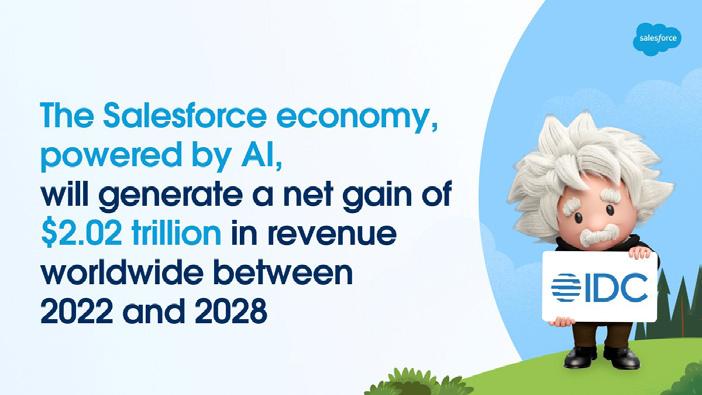
Salesforce shared the topline results from a forthcoming IDC study showing that the company and its partner ecosystem, fueled by the new wave of generative artificial intelligence (AI), will create a net gain between 2022 and 2028 of more than $2 trillion in business revenues and 11.6 million jobs. The study also identified the factors driving the adoption of AI–led by improving productivity – and the biggest barriers to adoption, including the talent gap, data governance and risk management, cost, trustworthiness, and bias.
While previous iterations of this study focused more narrowly on how cloud solutions were driving the Salesforce ecosystem’s growth, IDC expanded its approach in the latest version to account for the effect of AI in general – and specifically the potential of generative AI – on the company’s economic footprint.
For context, IDC’s 2021 report predicted that Salesforce and its partner ecosystem would create 9.3 million new jobs and $1.6 trillion in new business revenues worldwide between 2020 and 2026. This year’s study brings into focus just how powerful AI is and how it’s transforming businesses across sales, service, marketing, commerce, and IT.
This new methodology reflects
IDC’s belief that seismic advances in AI are accelerating economic opportunity for Salesforce and its ecosystem. Salesforce has been pioneering AI for CRM since 2014, ushering in the first phase of the AI revolution with predictive AI to help enterprises find new insights, recommendations, and growth opportunities. Today, Salesforce continues to fuel the AI revolution’s next phase with new generative AI capabilities.
The unprecedented pace of innovation and adoption of generative AI has ushered in a new phase in the AI revolution that will spark a new tech investment cycle.
Einstein is foundational to Salesforce’s Customer 360 platform which now powers over 1 trillion predictions per week for customers across sales, customer service, marketing, commerce, and IT.
Today, every Salesforce cloud has generative AI baked directly into the flow of work. For example, Sales Cloud is helping sellers autogenerate personalised emails, based on their unique CRM data that provides relevant context to prevent hallucinations, all with just a single click, giving sellers more time to focus on customers and close deals. Service Cloud customers can now autogenerate personalised replies using
• The biggest impacts of AI-powered solutions on organisations. These include:
o Helping employees do their jobs better (45%) and reducing repetitive tasks (42%)
o Over the next 12 months, respondents expect that helping employees perform better will continue to have a major impact (44%), in addition to boosting employee productivity (43%), increasing workforce AI skills (41%), and improving job satisfaction (40%).
• Top reported challenges, which include:
o A lack of skilled personnel like data engineers and AI modelers (35% of respondents)
o AI governance and risk management (34%)
o Cost (34%)
o Trustworthiness/bias in data (31%)
• Top roles organisations have hired for in the past 12 months or expect to hire for in the next 12 months. Results include:
o Data engineers lead the AI roles (50% of respondents)
o Business analysts (43%)
Tune into Dreamforce 2023 to hear more about Salesforce’s AI plans.
9 CXO INSIGHT ME SEPTEMBER 2023
CISCO SECURE APPLICATION DELIVERS BUSINESS RISK OBSERVABILITY FOR CLOUD NATIVE APPLICATIONS
result, organisations are reporting an explosion of security incidents in the modern environment, putting customer data and the reputation of their business at risk.
To help organisations secure cloud native applications, the new Cisco Secure Application offering — now available on Cisco’s recently launched Full-Stack Observability Platform — arms customers with expanded visibility and intelligent business risk insights across cloud environments, empowering businesses to better prioritise and respond in real-time to revenue and reputation-impacting security risks and reduce overall organisational risk profiles.
Cisco Secure Application integrates with Cisco’s industry leading security products and enables customers to:
• Locate and highlight security issues across application entities, including services, workloads, pods, containers and business transactions, and isolate them at speed.
Cisco announced the availability of Cisco Secure Application (previously Security Insights for Cloud Native Application Observability) on the Cisco Full-Stack Observability Platform, enabling organisations to bring together application and security teams to securely develop and deploy modern applications. The latest release of Cisco Secure Application helps customers to securely manage cloud native applications in addition to hybrid applications.
In the race to deliver seamless digital experiences, IT teams have experienced an increase in the
need to shift to modern, distributed applications, but according to a recent Cisco study, 92% of global technologists admit that the rush to rapidly innovate and respond to the changing needs of customers has come at the expense of robust application security during software development.
This has left companies exposed to security vulnerabilities and threats, with larger attack surfaces and gaps in their application security layer caused by siloed teams both struggling to gain visibility and the right business context to prioritise vulnerabilities. As a
• Prioritise issues with a business risk score that combines application performance data and business impact context from Cisco’s own Cloud Native Application Observability, with real-time vulnerability detection and security intelligence from Cisco’s security products, to identify which business transactions present the greatest risk.
• Accelerate response time to security incidents with real-time remediation guidance, complete with prescriptive actions to prioritise and address the most impactful security vulnerabilities.
“Application security has never been a more pressing priority for businesses, and traditional vulnerability scanning solutions simply don’t provide the information that teams need,” said Ronak Desai, Senior Vice President

NEWS 10 CXO INSIGHT ME SEPTEMBER 2023
and General Manager, Cisco Full-Stack Observability and AppDynamics. “An organisation’s ability to quickly assess risks based on potential business impact, align teams and triage threats is entirely dependent on understanding where vulnerabilities exist, the severity of those risks, the likelihood they will be exploited, and the risk to the business of each issue. This business risk observability can help IT professionals understand and prioritise those risks and is uniquely delivered by Cisco. The availability of Cisco Secure Application on the Cisco Full-Stack Observability Platform is a critical next step in our commitment to providing customers with the tools they need to deliver unmatched and secure digital experiences across hybrid and multi-cloud environments.”
“The successful digital infrastructure must operate as a concert — not as a collection of separate products, providers, and people. This requires all components — from core to edge, from network to applications, from on-premises systems to public cloud and communications services — to work as one to deliver the best digital experiences,” asserts Mark Leary, Research Director, IDC. “Cisco’s extensive domain experience across hybrid and multi-cloud environments and comprehensive full tech stack oversight positions the company well to help customers bring application observability, security intelligence data, and business risk observability together. Combined, they give customers access to the critical information they need to make smart decisions about their application security.”
BMW GROUP REVS UP IFACTORY PLANTS WITH SAP S/4HANA AND SUPPLY CHAIN LOGISTICS
SAP SE announced that the BMW iFACTORY in Oxford, United Kingdom, has successfully gone live with SAP S/4HANA, using SAP’s cloud-driven solution architecture for automotive industries.

The MINI Plant in Oxford is the first of BMW Group’s connected factories moving to the digitised cloud architecture over the next few years.
Going live for the first time worldwide in the production environment at the MINI plant is the next milestone for BMW’s iFACTORY, which represents BMW Group’s revolutionary strategy for future automotive production. BMW Group chose SAP S/4HANA and SAP’s supply chain logistics solutions to jointly create the first blueprint for process digitisation of automotive plants of the future, establishing a new technology standard that could shape the automotive industry.
The jointly created solution unites and simplifies the intricate simultaneous processes and IT system changes in the areas of parts logistics, finance/ controlling and customs. As each upcoming following iFACTORY leverages the RISE with SAP solution, BMW Group expects to benefit from the standardisation of logistics processes worldwide on the latest technology innovations, mutual plant support,
flexible workforce allocation, and synergy in support and training. With RISE with SAP, BMW Group will have faster access to innovations and be able to more quickly roll out new solutions in the production network.
“The Oxford plant is the first plant that will follow a global rollout within the BMW Group,” said Alexander Buresch, chief innovation officer and senior vice president, BMW Group IT. “From now on, more plants from the worldwide production network will be added every year until they all speak the same language. As part of our digitisation and harmonisation strategy, this new solution allows us to link relevant product, process, quality, and cost data, which enables data consistency and transparency across the production chain.”
Thomas Saueressig, member of the Executive Board of SAP SE responsible for SAP Product Engineering, said: “Process digitisation is a key enabler of the transformation of the automotive industry. The BMW Group and SAP have had a longstanding partnership and collaboration spanning more than 30 years. I’m extremely excited that this is the first time the parts logistics solution has been deployed on a cloud architecture developed together by BMW Group and SAP.”
11 CXO INSIGHT ME SEPTEMBER 2023
UNLOCKING THE DIGITAL FRONTIER
INNOVENTURES EDUCATION IS PIONEERING THE FUTURE OF LEARNING WITH HPE ARUBA NETWORKING
Digital transformation in the education sector is accelerating, prompting numerous educational institutions to adopt new and interactive learning methods, enhancing student experience and empowering staff. This shift to digital technologies has brought about profound changes in the education landscape.
Integrating technology and digital tools across all facets of education has allowed schools and universities to elevate the learning experience, facilitate
hybrid learning, and equip students for the digital era. A case in point is Innoventures Education, based in Dubai, which oversees some of the most prestigious schools and early learning centres in the UAE, providing world-class education to over 9,000 students. Among its educational establishments are Dubai International Academy Emirates Hills and Al Barsha, Collegiate International School, Raffles International School, Raffles World Academy, and eight Raffles Early Childhood Centers.
Since its inception in 2005, Innoventures Education has consistently delivered by establishing a fully integrated digital learning environment by implementing HPE Aruba Networking solutions.
“We live in the digital era, and our mission is to empower our students for success in today’s dynamic, global community. Technology is fundamental to this vision. We have pioneered the education sector in the UAE by incorporating digital learning aids into all aspects of our students’ learning experience – both within our campuses and beyond,” says Poonam Bhojani, CEO of Innoventures Education.
Innoventures Education’s guiding principle is to provide access

COVER STORY
Poonam Bhojani, CEO of Innoventures Education
12 CXO INSIGHT ME SEPTEMBER 2023
anytime, anywhere for its community. Nevertheless, as the adoption of digital learning tools accelerated and the number of devices surged, its infrastructure encountered escalating demands for bandwidth, security, and scalability to accommodate the expanding user base. Furthermore, the imperative for seamless network access and centralised management drove the decision to revamp its network infrastructure.
“This network refresh was undertaken to effectively tackle these challenges and establish a dependable, secure, and forwardlooking network for our educational ecosystem,” says Bhojani.
Leveraging HPE Aruba Networking’s solutions, the organisation ensures 100% high-speed Wi-Fi coverage throughout all its campuses. As a result, more than 9,000 students and educators can seamlessly and securely access a range of popular teaching, learning, and collaboration applications, including Microsoft Office 365 and Microsoft Teams, on a daily basis.
“We did our due diligence and evaluated other vendors who were also Gartner Magic Quadrant leaders; we were especially impressed by HPE Aruba Networking’s diverse range of enhanced network access control (NAC) solutions and security orchestration with ClearPass, as well as its broad range of wireless access points and switches unified in a coherent design,” says Bhojani.
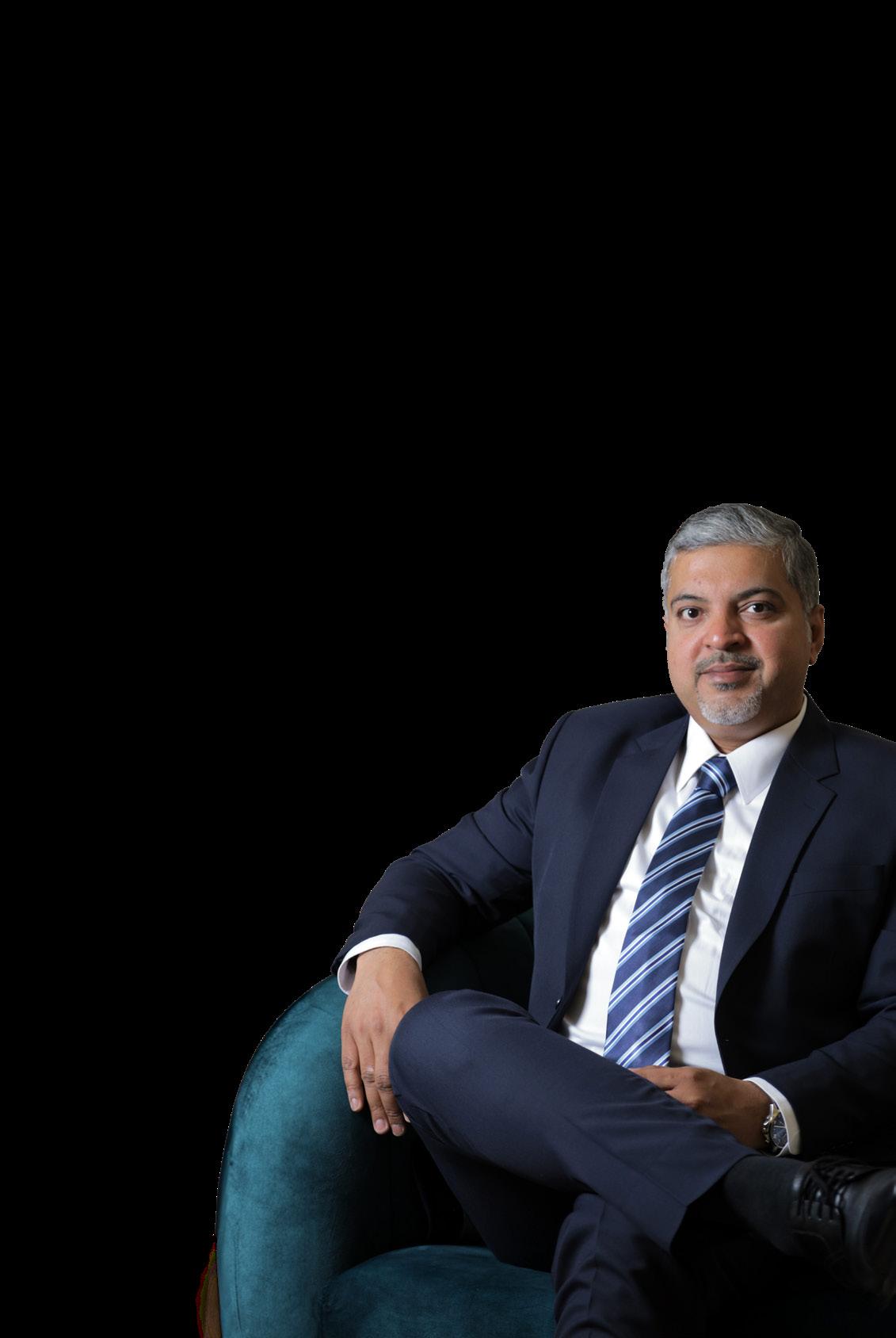
BYOD for learning
In today’s interconnected world, the wide array of digital devices, each personalised to individual preferences, has led the staff and students of the Innoventures Education group to favour using their own devices for both academic and leisure purposes.
“We aren’t restricting students to only devices that we provide. We know that they are most comfortable with their own smart devices, and we recognise the value of letting them use these for a personalised learning experience,” says Bhojani.
Every campus within the group now supports BYOD, and thanks to HPE Aruba Networking’s zerotrust architecture, all critical cloud applications, including the student
THIS NETWORK REFRESH WAS UNDERTAKEN TO EFFECTIVELY TACKLE THESE CHALLENGES AND ESTABLISH A DEPENDABLE, SECURE, AND FORWARD-LOOKING NETWORK FOR OUR EDUCATIONAL ECOSYSTEM.
13 CXO INSIGHT ME SEPTEMBER 2023
Zeeshan Hadi, Country Manager –UAE and Africa, HPE Aruba Networking
management system, library management system, e-assessments, and learning management system, are effortlessly and securely accessible to authorised users.
HPE Aruba Networking’s ClearPass solution ensures that personal and institution-owned devices alike can rapidly connect to the network while checking that these meet pre-set configuration and security criteria and that only relevant resources are accessible based on predefined roles.
The fresh network infrastructure also serves as the cornerstone of the group’s ongoing digitalisation initiative, accommodating various devices such as desktops, laptops, projectors, interactive display panels, iPads, CCTV systems, signage TVs, and attendance and access control systems.
“Our mission is to harness technologies to enhance the overall student experience at our schools. The new network guarantees the efficient operation of these solutions, resulting in intuitive and genuinely world-class experiences,” says Bhojani.
Driving efficiency
Across five school campuses, the streamlined and centralised network management, powered by HPE Aruba Networking Central, has greatly benefited Innoventures Education’s IT team by automating manual processes. This simplifies IT operations, reduces costs, and mitigates risks.
HPE Aruba Networking Central incorporates a comprehensive AIOps solution that automates routine troubleshooting tasks, leading to a reduction in IT support tickets and associated expenses. It also provides detailed visibility into the group’s network infrastructure and achieves client profiling accuracy of up to 99 percent, utilising native telemetry from HPE Aruba Networking infrastructure, eliminating the need for physical collectors or agents.
“Due to a substantial decrease in connectivity-related support tickets and a significantly enhanced timeto-resolution, we now require fewer resources for network management. We anticipate that this will result in a 50 percent reduction in costs over a three-year period,” says Bhojani. Leveraging a cloud-native, microservices architecture, HPE Aruba Networking Central fulfils enterprise needs for scalability and resilience. Its intuitive workflows and dashboards align perfectly with the goals of Innoventures Education, enabling it to drive further transformation with its available resources.
“Education has been a critical
vertical for HPE Aruba Networking since the beginning, and our technology has evolved to solve use cases that are critical for education. From our standpoint, the aim of this specific implementation had a dual purpose: first, to consistently enhance network performance by leveraging cutting-edge technologies like AI and ML, and second, to automate a multitude of tasks, enabling the group to allocate resources toward delivering an exceptional learning experience,” says Zeeshan Hadi, Country Manager – UAE and Africa, HPE Aruba Networking.
Hadi explains that in the postCOVID era, numerous educational institutions have recognised the necessity of enhancing their agility in delivering education. Moreover, the concept of “phygital” experiences, which has already made its mark in industries like retail, is now finding its way into the education sector. Nevertheless, the rapid evolution of applications is placing additional demands on school networks, compelling them to update their infrastructure to accommodate the increasing traffic volume.
HPE Aruba Networking’s robust networking architecture forms the bedrock of uninterrupted connectivity and scalability for the Innoventures Education group. Their vision includes adopting cutting-edge technologies like AI, AR, robotics, and IoT to facilitate interactive and immersive learning experiences.
“HPE Aruba Networking essentially empowers us to establish a dynamic and enriched learning environment, equipping our students for a technology-driven future. It instils in us the confidence to seamlessly integrate all this technology within our campuses, significantly enhancing the overall educational experience for our students and positioning Innoventures Education at the forefront of the education sector,” concludes Bhojani.
COVER STORY 14 CXO INSIGHT ME SEPTEMBER 2023
OUR MISSION IS TO HARNESS TECHNOLOGIES TO ENHANCE THE OVERALL STUDENT EXPERIENCE AT OUR SCHOOLS. THE NEW NETWORK GUARANTEES THE EFFICIENT OPERATION OF THESE SOLUTIONS, RESULTING IN INTUITIVE AND GENUINELY WORLD-CLASS EXPERIENCES.

SPEEDING TOWARD SUCCESS
VIBHU KAPOOR, REGIONAL VICE PRESIDENT - MIDDLE EAST, AFRICA & INDIA, EPICOR, SHARES FIVE KEY POINTERS TO ACCELERATE THE JOURNEY TOWARDS BECOMING A DATA-LED ENTERPRISE

this is widely known. Cloud migration brings the right infrastructure for scaling up data leverage. Business stakeholders can incorporate processes and workflows into the new environment and define goals, policies, and even challenges within a coherent data framework. Access for employees is also improved, which is critical for a workforce that may be working from anywhere at any time. Cloud environments make it easier to provide security at scale — another vital component in a region beset by ransomware and other threats.
the employee. We live in the age of employee experience. Employers are now the ones in the shop window. If you adopt an automate-first strategy, how much good talent will you be able to attract if they are unsure when their role may become automated?
If — as any shrewd business leader should — you accept that enterprises are still only as good as their people, then those people must necessarily be at the heart of every technology decision. A secure and reassured workforce will serve customers better, innovate more freely, and stay longer.
In business, insights are everything. They are the angled mirrors that help decision makers see round corners. And in insights, data is everything. It is the light that bounces off the mirrors.
Here are five considerations that will enhance any journey towards becoming a data-led organisation.
1. Silos, begone
Data silos remain a sticky problem, as does internal opposition to their demolition. But if companies want to futureproof themselves against, say, supply-chain disruptions, they must lean into the wind and get it done — get rid of silos and unify the data infrastructure. In place of silos, we should see tighter integration of platforms and as few vendors as is practicable.
The first step in accomplishing all
2. Analyse this… and that When moving to the cloud, one advantage that is immediately felt is that of cost reduction. Hardware and model expenses are reduced, and this is true for businesses of all scales. Everywhere we look, we see this democratisation of AI, so every business must now operate under the assumption that it is only a matter of time before their competitors adopt AI and ML. This calls for an AI strategy — one that encompasses daily use and is underpinned by governance that ensures that data gathering, data storage, model building, model maintenance, and more are consistently compliant and continually adding value.
3. Got talent?
A data-driven company should be one in which people are empowered, not replaced. Models built around leveraging trends, alleviating stress points, and replacing outdated processes only work because they are empowering
4. Look out the window
If the past few years has taught us anything it is that the most powerful insights occur when looking outside the confines of the business. There are entire networks of data and intelligence available across a variety of industries. Properly integrated into the enterprise’s data environment, they can help with supply-chain visibility and a range of other trend-watching use cases. They can boost efficiency and time to market.
5. Walk softly and focus
Jumping in with both feet on any largescale change project is a recipe for disappointment. Be “data informed”. Ask questions. Find out what is available and what use it may have. It is all well and good to have millions of records on hand, but if they do not help accomplish a specific business goal, then what is the point? Be “data driven”. Determine ways of using what you have to generate useful insights and make better decisions.
VIEWPOINT
16 CXO INSIGHT ME SEPTEMBER 2023
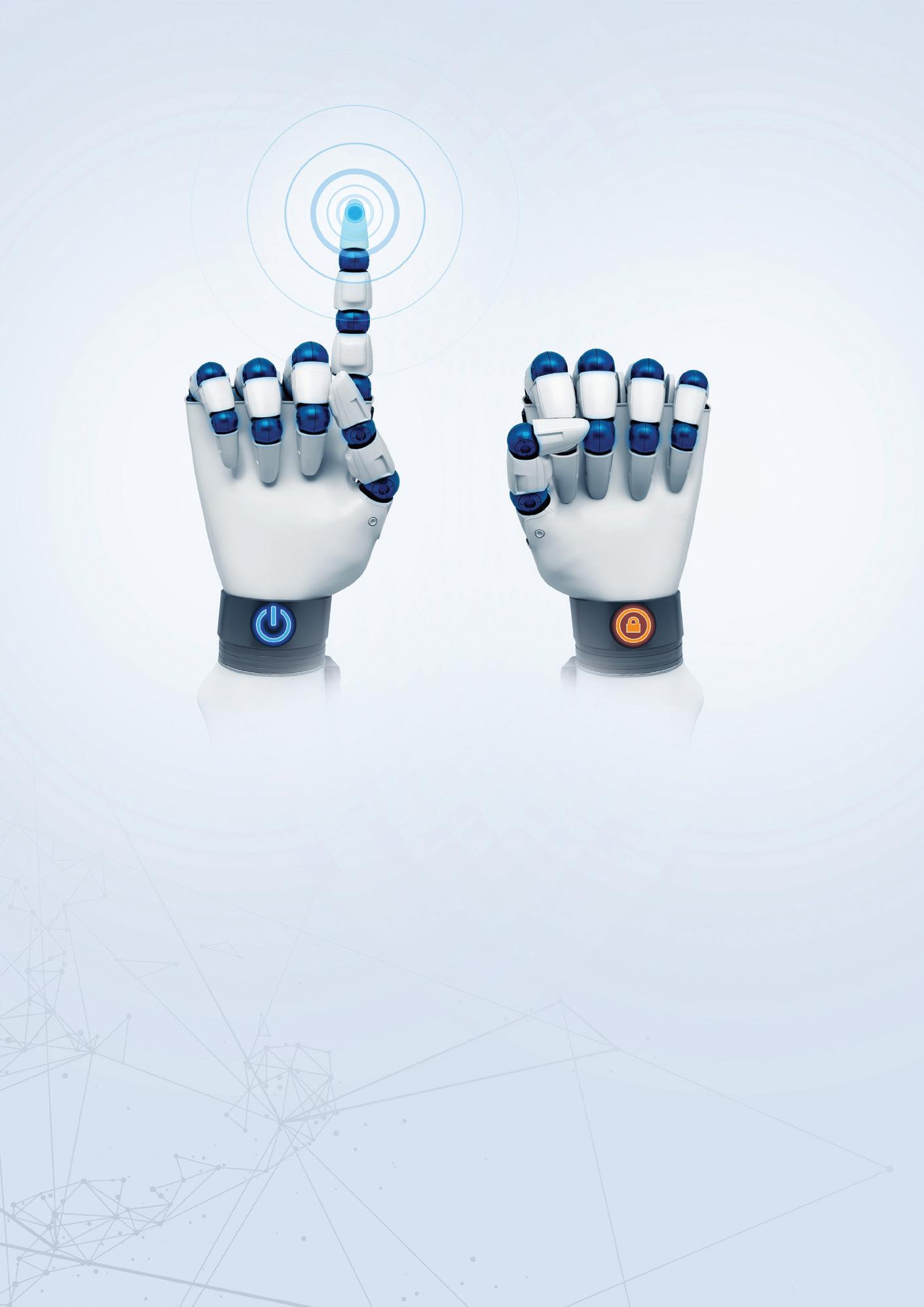


PIONEERING INNOVATION
AS A PROMINENT PROVIDER OF VISA MEDICAL FITNESS TESTING
AND WELLNESS SERVICES IN THE UAE, SMART SALEM CENTRE HAS REVOLUTIONIZED THE HEALTHCARE EXPERIENCE. WE SPOKE WITH THE CEO, SANJAY VERMA, AND THE CTO, DR. JOSEPH GEORGE, TO EXPLORE THE EXCEPTIONAL SERVICES AND CUTTING-EDGE TECHNOLOGIES THAT DISTINGUISH THEM IN THE HEALTHCARE SECTOR.
What are the main services provided by Smart Salem Centre?
SV: Smart Salem provides premium visa medical fitness testing services for UAE residency and wellness testing. We provide an exceptionally fast service where medical fitness results are received in 30 minutes and there is close to no wait time. We have recently also added same day Emirates ID biometrics appointments as part of our services where Smart Salem customers can complete all their visa medical test and biometrics in less than 60 minutes.
How does Smart Salem use advanced robotics to enhance efficiency?
JG: Turn-Around-Time (TAT) and customer satisfaction are always tightly coupled with efficient and well considered processes. Smart Salem offers a premium experience at every stage of our customer’s journey. Customers coming for renewals typically spend less than 6 to 8 minutes going through the process. This means, the end-to-end customer journey and they will have the results electronically within 30 minutes. For a new visa test, where radiology services are involved, the customer journey generally takes 12-15 minutes and, in this case too, the
results are generated in 30 minutes. We focus on every saving because every second counts. Repetitive tasks are identified and automated via RPAs and we use robotics in many ways to find further efficiencies.
At Smart Salem, experience, process automation and process efficiency start from the inception of conceptual building design. We build around the customer experience. One of the robotic processes which is worth mentioning here is the way we transport blood samples from the phlebotomy area
ONE OF THE ROBOTIC PROCESSES WHICH IS WORTH MENTIONING HERE IS THE WAY WE TRANSPORT BLOOD SAMPLES FROM THE PHLEBOTOMY AREA TO THE LAB. WE USE A STATEOF-THE-ART AUTOMATED CONVEYOR BELT, WHICH MOVES THE SAMPLES FROM THE COLLECTION ROOMS IN JUST FIVE SECONDS.
to the lab. We use a state-of-the-art automated conveyor belt, which moves the samples from the collection rooms in just five seconds. This needed a careful design of the lab and the phlebotomy area. In one of our medical centres this is not practical as the room layout doesn’t support this. Instead, we utilize robots which operate at the commands of our staff via Alexa.
When you visit Smart Salem, you can see multiple robotic flavours. We have a number of robotic friends at Smart Salem; the static Barista Coffee Robot, the Rolly Waiter Robot delivering refreshments water and several others. You will be greeted by our own Salem Robot, who is adored by kids as well as adults. This brings a wonderful sense of fun and play, and uses technology to deliver a simple but meaningful customer moment. You can see the newest models at our DIFC Index Mall centre.
What digital technologies are integrated into the customer journey at the centre?
JG: We focus on enhancing the customer journey every day. We have built an experience that feels like a retail shopping environment rather than being in a medical centre. Digital technology underpins the entire journey. At Smart Salem, your first interaction point is
INTERVIEW
18 CXO INSIGHT ME SEPTEMBER 2023
our digital kiosks. It’s a technology accumulator, bundled as a kiosk. Medical Fitness needs an application to be created; our kiosks generate these within seconds, no manual typing, no manual input- just produce your EID/ Passport or just look at the camera, and your iris will do the work.
The complete journey at Smart Salem is seamlessly integrated with multiple government and health authorities. Starting from GDRFA and Immigration up to the notification to Dubai Health Authority. We use the Salem platform as our core and have built an enhanced proprietary layer of ‘Smart Salem’ on top of it.
If you ask about the technology spread, it’s not about the number of technologies, it’s about the adoption and how they are integrated together to produce the best result. We always ensure every piece of technology plays its own role in the customer journey, we apply it smartly. Even zero cost
innovations can bring a huge disruption. All Smart Salem centres have their own onsite laboratories, which is one of the main factors allowing us to deliver the end result in 30 minutes.
AI has an important role to play in our ecosystem. We utilize AI on radiology reporting and it’s an integral part of the framework. ML and NLP together with generative AI supports our call centres and support staff to deliver their work on time with accuracy.
Technology is not an enabler anymore, it’s a driver now. We aim to embed technological capabilities in all facets of our business and don’t stop it there. We infuse it in the behaviour and adoption patterns, then it does wonders. Our valet parking service is one of the best examples for this, we offer free a valet parking service. We don’t want you to go and produce your ticket at the valet counter and wait for the car to come, instead your ticket calls the car when you are leaving the
centre so it’s there when you arrive. Data Analytics is something else which we handle with utmost care and passion, every customer journey is precious and with everyone we learn new lessons. Business Intelligence plays a key role in Smart Salem’s operations and informed decision making.
What is the role of Smart Salem in contributing to Dubai’s commitment to providing innovative health services?
JG: We believe we deliver a digital health service that Dubai can be very proud of. Smart Salem works in the wellness space rather than the illness space. Healthcare should be accessible affordable and excellent and Smart Salem is always committed to delivering this. At present we are primarily on medical fitness and wellness services, but Occupational Health and other services are on track to be delivered shortly.

 Sanjay Verma
Sanjay Verma
19 CXO INSIGHT ME SEPTEMBER 2023
Dr. Joseph George
BUILDING THE FUTURE
ASHRAF YEHIA, MANAGING DIRECTOR AT EATON MIDDLE EAST, EMPHASISES THE GAME-CHANGING POTENTIAL OF MODULAR DATA CENTRES.

Data centres are the unsung heroes of our digital age, quietly supporting our daily activities and powering businesses worldwide. As the demand for data storage and processing skyrockets due to cloud adoption, IoT, and AI applications, the data centre market faces unprecedented challenges. The need for continuous expansion, soaring energy consumption, and environmental concerns are driving the industry towards innovative solutions. One such transformative approach is the adoption of modular data centres, offering a host of benefits that tackle these pressing issues head-on.
The global data centre market has seen phenomenal growth in recent years, valued at $466 billion in 2020 and predicted to nearly double by 2030. Meanwhile the Middle East and North Africa data centre market is estimated at $ 3.4 billion in 2022 and is forecasted to reach US$ 10.4 billion by 2028, growing at a impressive rate of 20.4%.
The increased demand for data processing and storage is driving a massive 400% increase in electricity consumption by 2030, primarily for powering and cooling computational hardware. Already accounting for between one and four percent of global electricity use, data centres face mounting environmental and sustainability pressures.
The environmental impact of data centres is a growing concern. The process of training AI models alone contributes to approximately 25 tons of CO2 emissions, with an additional 25 tons generated during hardware
production and ongoing operation, equivalent to 60 flights between London and New York.
The European-based Climate Neutral Data Centre Pact, initiated in January 2021, brings together over 40 companies and trade organisations with the shared goal of achieving climate neutrality for data centres by 2030. Governments, too, are stepping in, proposing stricter regulations on energy efficiency and demanding sustainability reporting from data centre operators. UAE, the leading data centre country in the GCC is aiming to reduce its carbon emissions by 31% by 2023. Saudi Arabia is aiming to achieve net zero emissions by 2060.
The disruptions caused by the COVID-19 pandemic have cast a shadow on global supply chains, affecting the availability of critical resources essential for data centre construction. Semiconductors and base metals, crucial components for data centres, are particularly impacted, making sourcing difficult and expensive.
To mitigate supply chain vulnerabilities, data centre operators are increasingly exploring secondary cities in major economic nations and the capitals of smaller economic nations. While this offers growth opportunities, it also presents unique challenges, such as unfamiliar regulatory environments, limited site availability, and a shortage of skilled labour.
In response to these mounting challenges, a revolutionary approach has emerged – modular data centres. These prefabricated, pre-engineered, and pre-integrated units provide a flexible and scalable solution to data centre construction. By adopting a “plug and play” approach, modular data centres reduce the reliance on on-site engineers, speeding up the construction process and optimising efficiency.
The benefits of modularity extend beyond just rapid deployment. Modular data centres inherently support sustainable practices. The integration of grid-interactive uninterruptible power supplies empowers data centres to contribute back to the grid, providing auxiliary power energy services when needed. This energy control not only reduces operational costs but also enables operators to participate in renewable energy initiatives.
Predictable capital expenditures (CAPEX) and predetermined specifications further enhance the attractiveness of modular data centres. By utilising under-utilised or nontraditional buildings, operators can efficiently scale their operations without needing to secure new real estate. As businesses increasingly operate in a digitally driven economy, the demand for scalable, resilient, and sustainable data centres continues to surge. Embracing the modularity approach, data centre operators can address the environmental concerns, supply chain disruptions, and expansion challenges effectively. While the traditional brick-and-mortar approach remains relevant, modular data centres emerge as a compelling solution, offering expert system engineering, scalability, safety, and sustainability all in one comprehensive package.
VIEWPOINT
20 CXO INSIGHT ME SEPTEMBER 2023



LEADING THE WAY TO DIGITAL SUCCESS
LAWRENCE ETA, THE HEAD OF DIGITAL AND ANALYTICS
AT THE ROYAL COMMISSION FOR ALULA, HIGHLIGHTS THE OVERARCHING GOAL OF DIGITAL TRANSFORMATION IN ALULA
“To embed digital and data as an integral and natural part of visiting, living and working in AlUla; that drives economic growth and enhances safety and security.”
This statement outlines, guides, and defines the Royal Commission for AlUla’s (RCU) digital strategy. As statements go, it is bold. And it is ambitious. But importantly, it has a strong focus and realisation.
From the outset, we envisioned our digital and data aspirations as a means of empowering AlUla – its tourists, residents, businesses, and visitors. Transforming capabilities, promoting collaboration and knowledge sharing, all while providing seamless experiences and services that connect AlUla with the world.
Ultimately, our digital strategy is regenerating a unique place with an exceptional historical, natural, and cultural heritage while improving people’s quality of life.
For our community to truly feel the benefits, the digital and data transformation we are delivering must be ubiquitous and seamlessly integrated into people’s lives, simplifying their routines, and acting as an ‘invisible driver’ of the AlUla experience.
To arrive at our destination, we have outlined three main pillars upon which our goals are taking shape.
The first is Information and Communication Technologies (ICT). This is the critical telecommunication infrastructure that makes it possible to build up the scalability of fiber and cellular capacity in AlUla, thereby making digital services widely available and accessible.
The second is creating a solid data
platform; enabling a comprehensive operational and executive dashboard that acts as our single source of truth for decisions and actions driven from data. The data is centralised and gathered from various social, economic, and environmental sources before being transitioned as information to assist us in reporting, analyses and making predictive actions that are interconnected between our sectors.
The third component involves two centralised smart enablers: our Smart County platform; collecting and integrating operational data providing real-time monitoring. And our Smart Development Management System; ingesting various data sources to create a Digital Twin with an integrated, transparent, and automated digital and data workflow process improving efficiency and effectiveness for the planning, development, and construction of the county.
These pillars have been carefully merged into one cohesive, seamless, and unique digital strategy to integrate a holistic eco-system enabling our sectors with their work and empowering AlUla’s digital transformation.
But we are not simply building
22 CXO INSIGHT ME SEPTEMBER 2023 VIEWPOINT
TODAY, RCU IS RAPIDLY MATURING IN TERMS OF HOW TECHNOLOGIES ARE BEING UTILISED. ONCE ALL THE ELEMENTS OF OUR STRATEGY ARE GRADUALLY APPLIED AND ACCESSIBLE FOR OUR CUSTOMERS, THESE TECHNOLOGIES WILL PROVIDE POSITIVE RESULTS FOR OUR COMMUNITY.
technologies for the sake of it. Rather, we are solutioning interoperable technologies to scale to be utilised, to accelerate the development of AlUla into a world-class, advanced, fully digitalised, and data-driven destination with community at its core.
What digital looks like
Synergising our project in a place like AlUla requires a deep commitment to regeneration – to comprehensively develop and reimagine an untouched greenfield and brownfield location in a way that expands and showcases the majestic beauty of AlUla.
What this means is the opening up of new channels for residents, visitors, and businesses to access information and services in a customer friendly and intuitive manner from digital devices.
Seamless integration through digital

transformation brings numerous realworld and sustainable development benefits as soon as you arrive in AlUla. Our plans for that experience begin at people’s first point of engagement with AlUla, allowing them to interact through a series of digital tools explaining how to navigate and fully experience the destination – all within a digital format. The recently launched Experience AlUla app emphasises how key services are being embedded in AlUla and its future as a global landmark.
Our strategy has a strong community focus with quality of life playing an essential part. It is driving us to rethink and improve mobility, to create skilled jobs that will supercharge economic development as well as support population growth and retention by showing that people
don’t need to leave in search of new careers in advanced industries.
It will make it easier to communicate with local authorities and businesses who are digitally available, allowing for swift and transparent license applications to engage with government services – all conducted in real time, fully paperless, and automated for maximum efficiency.
The digital landscape we’re building also means we can see where investment is needed, where infrastructure works are required –again, all in real time – so that we can accurately apply resources, direct investment, and see how each sector of our economy is performing and how it is digitised.
Today, RCU is rapidly maturing in terms of how technologies are being utilised. Once all the elements of our strategy are gradually applied and accessible for our customers, these technologies will provide positive results for our community.
A future in progress
We are still in the early stages, but we are committed to our journey and making progress. The foundation platforms continue to be implemented and our ambitions are being articulated with a strong focus on delivery.
We no longer view AlUla through the traditional lens that previously shaped people’s perceptions – as a place that belongs only in antiquity.
Today, I see AlUla as a destination that is being transformed through a digital strategy that is embracing the future at a rapid pace.
It is moving forwards with the adoption of new technologies, with a focus on integration as well as interoperability to make people’s lives better through systems that will bring far-reaching benefits to our community and to future generations.
This is a place where digital, data, and technology aren’t just buzzwords or tools to use when and where needed – they’re a natural part of life. A part of the landscape. A part of AlUla.
23 CXO INSIGHT ME SEPTEMBER 2023
GUIDING THROUGH THE MAZE
UNCOVERING DIGITAL TRANSFORMATION PITFALLS
In the ever-evolving landscape of technology and business, the allure of digital transformation is undeniable. Organisations worldwide embark on this journey, enticed by the promises of increased efficiency, enhanced customer experiences, and newfound competitive advantages. However, as they navigate the complex terrain of digital transformation, they soon discover that beneath the surface of promise lies a treacherous landscape fraught with pitfalls.
Most digital transformation projects face a significant risk of failure due to a variety of complex factors. While each case is unique, several common reasons contribute to the failure of many digital transformation initiatives.
Not having a well-defined and documented digital transformation strategy can lead to confusion and misalignment within the organisation. Without a clear roadmap, initiatives may lack direction and purpose.
“Organisations embarking on digital

FEATURE
24 CXO INSIGHT ME SEPTEMBER 2023
transformation initiatives often have misconceptions or unrealistic expectations, such as assuming that they can achieve success overnight or that technology will solve all their problems. Digital transformation requires a holistic approach that considers people, processes, and technology,” says Ayman El Sheikh, Regional Director Solution Architecture, MENA, at Red Hat.


Rami Mourtada, Partner & Director, Digital Transformation, BCG, shares a similar opinion: “Organisations often harbour the misconception that digital transformation requires large-scale preparations from the outset. However, the reality is that a bold, user-centric, and agile approach is more effective. Rapid, focused, and increasingly bold changes should be the aim to build momentum and ensure the entire organisation is on board.
“Another prevalent misconception is associating digital transformation success solely with detailed planning, substantial budgets, and the latest technology. Over-prioritising these aspects can lead to delays, overspending, and adoption challenges, especially if the technology isn’t designed with a user-centric mindset.”
According to Deloitte, while 85% of CEOs accelerated digital initiatives during the pandemic, an overall integrated strategy and tracking progress are some of the top challenges. Since embarking on a digital transformation journey is a lengthy process for any organisation, there are several common misconceptions and unrealistic expectations that can arise during this process.

“One major misconception is expecting immediate results and a rapid return on investment. Digital transformation is a complex process that takes time to plan, implement, and integrate. It’s important to have realistic timelines and understand that the benefits may take time to
materialize. Additionally, believing that technology alone will solve all problems is a common mistake. Digital transformation involves more than just adopting new tools; it requires a holistic approach that considers changes in processes, culture, and skill sets,” says Stephen Gill, Academic Head of the School of Mathematical and Computer Sciences, Heriot-Watt University Dubai.
.Technology is an enabler, but organisational changes are equally important. Finally, change management is often underestimated or overlooked. Communicating the reasons behind the transformation, involving employees in the process, and providing adequate training and support are vital for a smooth transition, he adds.
Placing excessive emphasis on acquiring technology can also result in a digital transformation initiative losing alignment with the organisation’s central objectives.
Philippe Jarre, President Mindware Group, says when organisations prioritise technology acquisition without a clear alignment with their core objectives, they may make decisions solely based on the capabilities of the technology rather than how it fits into their overall strategy. Investments in tools and solutions must be a consequence of a well define alignment on the company strategy and processes.
And all the tools and applications of the company must be fully integrated together. These disparate systems may not integrate seamlessly with
 Rami Riad Mourtada, BCG Stephen Gill, Heriot-Watt University Dubai Ayman El Sheikh, Red Hat
Rami Riad Mourtada, BCG Stephen Gill, Heriot-Watt University Dubai Ayman El Sheikh, Red Hat
25 CXO INSIGHT ME SEPTEMBER 2023
each other or with existing processes, causing inefficiencies and data silos. This fragmentation can hinder the organization’s ability to achieve its objectives cohesively.
“Digital transformation should be a strategic initiative aimed at achieving specific business goals. Overemphasising technology acquisition can divert attention away from strategic planning, resulting in a lack of clarity about what the organization is trying to achieve and how technology fits into that broader vision,” he says.

Paul Hardy, Innovation Officer, EMEA at ServiceNow, says successful digital transformation involves much more than just deploying the tools. It requires a thorough rethinking of the organisation’s culture, processes, and strategy. Having clearly defined and
realistic expectations are a key driver in the speed in which results are achieved, because digital transformation is a continuous process that requires patience and long-term commitment. Believing that technology alone will solve all problems can lead to ignoring the importance of employee training, change management, and aligning digital initiatives with the broader business’ goals, hindering the successful achievement of transformational outcomes.
Resistance to change among employees is another factor that can derail or slow down digital transformation efforts.
“Employees’ resistance often stems from fear of the unknown, concerns about job security, and a lack of understanding about the benefits of the changes. This resistance can manifest as reluctance to adopt new technologies, scepticism about altered workflows, and general opposition to the transformation process. Ironically, the tools meant to aid and benefit employees themselves become a sticking point,” says Laith Al-Bazirgan, Digital Evangelist at Endava.
To secure staff buy in, organisations must craft comprehensive change management strategies that includes clear communication and tailored training. Going a step further and involving employees in the decisionmaking process can help mitigate resistance from the earliest stages, and yield an implementation that is best suited to its user group, he adds.
On an organisational level, research by McKinsey shows that 70% of digital transformation programs fail due to employee resistance and lack of support from management. Understanding how employees are evolving and adjusting to digital transformation is key to technology having a transformative impact. Resistance can lead to decreased employee engagement and productivity.
“Employees who are not on board with the changes may become disengaged
and less motivated to contribute to the success of the transformation. This can lead to inefficient workflows, increased errors, and a negative workplace atmosphere, resulting in a high turnover and cost overruns. Therefore, digital transformation efforts should not be dealt with as a domain solely run by IT departments. Collaboration between multiple stakeholders, teams, and departments is key to fruitful digital transformation efforts.” Says Gill.
It is also important not to neglect cybersecurity and data privacy considerations during digital transformation.
El Sheikh from Red Hat says neglecting cybersecurity and data privacy considerations during digital transformation can lead to significant risks, such as data breaches, security vulnerabilities, and reputational damage. “Organizations must prioritize cybersecurity and data privacy in all aspects of their digital transformation initiatives, from technology acquisition to employee training and beyond.”
Mourtada from BCG says organizations must remain vigilant to emerging user sentiments regarding new digital services. Employee inflexibility and resistance to change can be significant roadblocks to digital transformation success. Such resistance often results in limited adoption of new digital services, preventing the realization of anticipated benefits. This resistance can lead to a downward spiral of dissatisfaction, further strengthening resistance and causing delays in the transformation journey.
Jarre from Mindware sums up: “To mitigate these risks, organizations should prioritize cybersecurity and data privacy as integral components of their digital transformation initiatives. This includes implementing robust security measures, conducting regular security assessments, training employees on security best practices, and ensuring compliance with relevant data protection regulations.”

FEATURE
Paul Hardy, ServiceNow
26 CXO INSIGHT ME SEPTEMBER 2023
Laith Al-Bazirgan, Endava
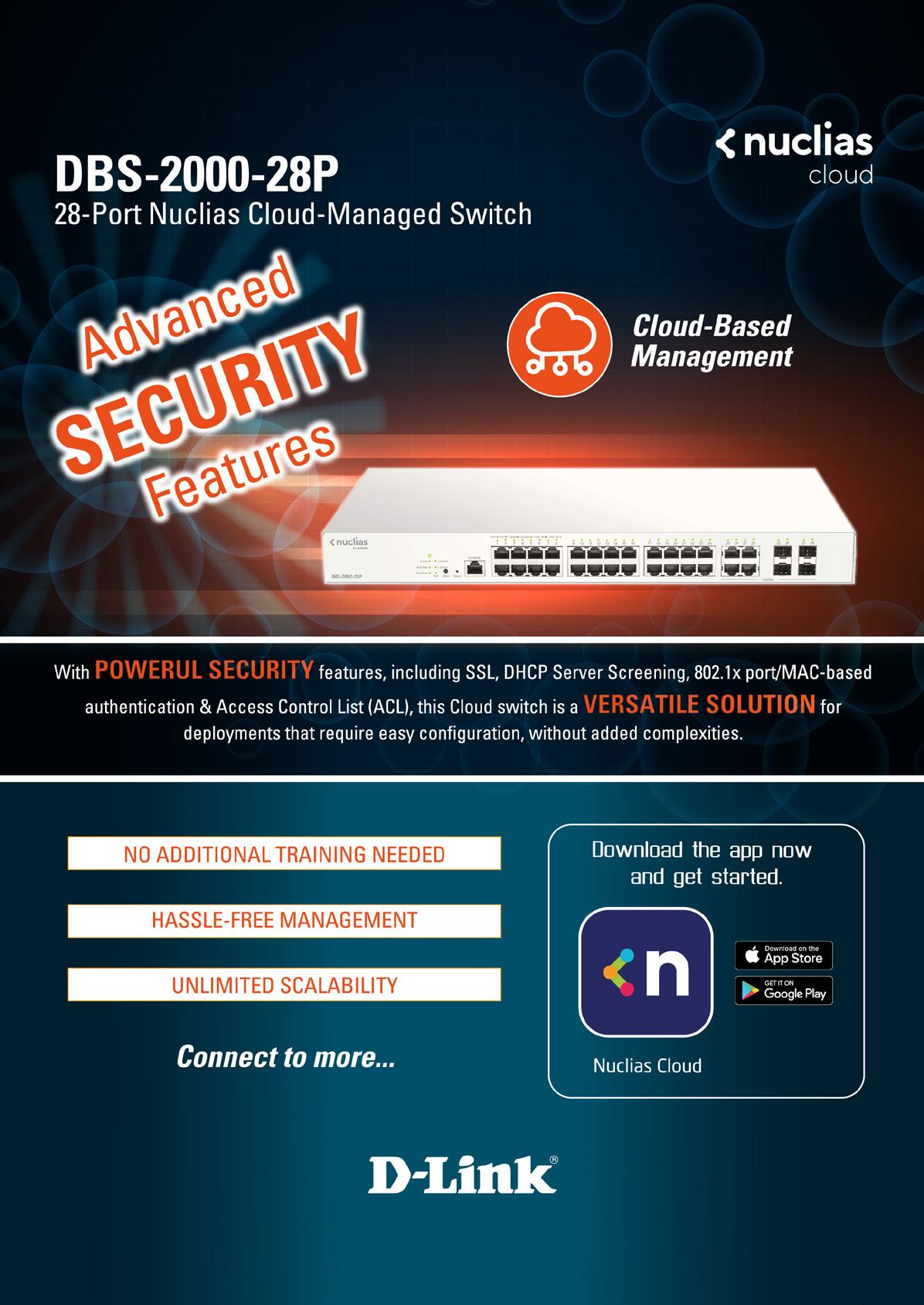
UNLEASHING INDUSTRIAL DATA

NICOLE RENNALLS, VP AND GENERAL MANAGER, DATAWORKS, ASPEN TECHNOLOGY, WRITES ABOUT HOW TO TURN INDUSTRIAL DATA INTO YOUR COMPETITIVE SUPERPOWER

Industrial companies today are facing foundational challenges, both in meeting their operational objectives, and leveraging the vast volumes of data available to them to decide how best they can meet those objectives. For example, 55% of Middle Eastern capital-intensive companies highlighted in recent research commissioned by AspenTech say they are say balancing global demand for resources with sustainability targets and a need to meet profitability goals.
To have the best chance in meeting these objectives it is important to have a holistic industrial data management strategy that leverages existing assets and technologies to unlock the full potential of the plant. This means an integrated solution that enables connectivity to all data sources, provides access to real-time monitoring, and inherent security and governance. This solution will enable digital initiatives such as improving asset reliability with predictive and prescriptive maintenance, digital twins, scheduling optimization, and many, many others.
Delivering on this vision is challenging today for many assetintensive organisations across the Middle East and North Africa. Of course, there is no lack of available data. Companies across these industries have been recording and capturing large amounts of it for decades. This data has incredible potential but putting it to good use is far easier said than done.
Unlocking high value use cases that leverage this data, in areas such as production optimization, machine learning, or emissions tracking, requires a data management strategy that is different from what has been done in the past. Industrial data and systems have, after all, traditionally
been located in organisational siloes, rendering most of the data not actionable at scale.
To address the challenges outlined above, organisations across MENA will often build data lakes in which data from disparate sources is aggregated. These data lakes are capturing data at an accelerating rate and rely on a highly skilled workforce to put that data to good use.
The data lake that previously had so much potential becomes an expensive data swamp with low visibility and high complexity, wasting the potential of the captured data.
So, what’s the solution? Traditional data historians continue to have a mission-critical role in collecting, merging, and storing large volumes of data and making that data accessible. Today, operators and engineers within plants across assetintensive organisations use historians to monitor operations, analyse process efficiency and investigate opportunities. These are missioncritical systems, customised for the operation teams’ use.
But over time, there has been a growing need for a new breed
of solutions to support advanced analytics and to quickly scale horizontally across an organization. These new breeds of solutions are sometimes called a data hub or data fabric. At the same time, on the IT side of the equation, digitalisation teams and their initiatives require clean, structured and contextualised data to generate usable insights and grow use case volumes. While the various data sources, including historians, provide at-a-glance analyses, the customised and disparate nature of these sources makes it difficult for consistency in how data is contextualised and structured.
By combining plant-level historian solutions with enterprise data integration and management technology, providers can streamline IT/OT convergence. In line with this, we are now witnessing the emergence of next-generation real-time data platforms or hubs, helping industrial organisations collect, cleanse, consolidate, contextualise, and analyse data from their operations.
An enterprise data hub solves the biggest data challenge organizations face: scale. Scaling value from data and scaling digitalization initiatives is being held back by the complex web of technologies, integrations, and connectors.
Industrial companies today face numerous challenges, including the need to meet operational objectives, understand vast amounts of data, and improve asset reliability. To address these challenges, industrial companies need a data management strategy that leverages existing assets and systems. This strategy should include an integrated solution that enables companies to connect all data sources, access real-time monitoring, improve asset reliability, and increase overall plant efficiency.
VIEWPOINT
28 CXO INSIGHT ME SEPTEMBER 2023


GUARDING THE CHAIN
NAVIGATING THE CRITICAL LANDSCAPE OF SUPPLY CHAIN CYBERSECURITY

As businesses continue to digitise their operations and rely on digital technologies to manage their supply chains, the need for robust supply chain cybersecurity measures has never been more critical. Modern supply chains are highly complex and this makes it vulnerable to various threats. These attacks can target sensitive data, disrupt operations, or compromise the integrity of products and services. Ensuring supply chain security is essential to mitigate these risks.
Some of the recent high-profile cases of supply chain attacks include SolarWinds where attackers inserted a malicious code into the IT management provider’s software updates and Colonial Pipeline ransomware attack, which disrupted fuel supply on the US east coast.
“Our cyberinfrastructure is more shared than ever. Today’s digital enterprises rely on dozens of vendors and modern apps are built using opensource components and pieces of code from other apps and APIs. Globally, we have never been more interconnected—

which means when one company is targeted, the supply chain becomes vulnerable,” says Tim Brown, Chief Information Security Officer and Vice President, Security at SolarWinds.
He says tt’s because of this interconnectedness that we need to work together to secure our shared cyberinfrastructure. “That’s why, following SUNBURST, we prioritised transparent communication with the industry and our customers, as well as collaboration with U.S. government agencies to understand what happened to help the full industry be safer.”
According to Mike Fraser, VP & Field CTO of DevSecOps, Sophos, supply chain cybersecurity has many challenges stemming from interactions with thirdparty entities, including hardware and software. Key vulnerabilities include inadequate security measures among some suppliers, creating potential entry points for malicious actors. Many organisations grapple with visibility gaps, lacking a comprehensive view of the entire supply chain’s cybersecurity posture. The inherent complexity of vast, multi-tiered supply chains means
multiple potential weak points.
Biju Unni, Vice President at Cloud Box Technologies, says since the global pandemic, supply chain threats have escalated - cyber and noncyber. The increasing range and lethality of the present cyber-attacks continues to be a source of concern. Supply-chain security and resilience are a focus of attention because the risk demands it.
“Digitisation and technology responsible to deliver key functions has introduced a completely new stack of cyber risk’s that need to be
FEATURE
Mike Fraser, Sophos
30 CXO INSIGHT ME SEPTEMBER 2023
managed. This is relevant for not only manufacturers but also countries against threat players using supply chains as a mechanism for attacks. There is a spate of protectionist steps major manufacturers have taken,” he adds.
Recent high-profiled supply chain attacks have highlighted the importance of corporate and product security for clients. While corporate security is traditionally considered the biggest risk for phishing attacks and ransomware, and the primary focus for most executive teams and board members, the security of the products being manufactured has become a focal point in recent cyber security attacks.
“If the products being manufactured have any software components or entirely composed of software, vulnerabilities identified in the product can potentially be exploited to not only compromise the company, but any company using the software. This
represents a massive risk surface and anyone with the software deployed could be susceptible to a breach,” says Morey Haber, CSO at BeyondTrust.
The SolarWinds attack, called SUNBURST illuminated the concerning new reality for the software industry and the increasingly sophisticated, previously unforeseeable threats that outside nation-states are capable of making to the supply chains on which we all rely. SUNBURST was the first to

demonstrate this, but there have been many incidents since that highlight both the scope and persistence of these cyber threats, as well as the negative impacts they’re capable of inflicting.
“On the positive side, the attack also raised an alarm for leaders everywhere to reexamine their security, prepare for threats, and raise the standards of the supply chain. Over the past two years, I’ve seen the industry embrace transparency and collaboration between public, private, and government organizations for our shared benefit,” says Brown.
Ram Vaidyanathan, IT Security Evangelist at ManageEngine, cites the
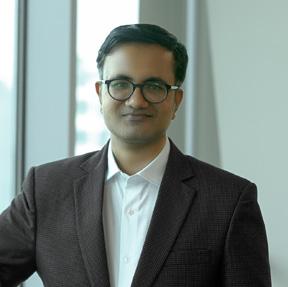


example of the MOVEit attack, which took place in June 2023, is a good example of what happens when vulnerabilities are left unnoticed and organizations do not implement the latest patches regularly. As an organisation handles more endpoints, the risk of a ransomware supply chain attack increases.
“All that attackers need is a single weak point in the supply chain, and they can infect multiple organisations. Having multiple targets increases the attackers’ ransom payout. Organisations need to invest in security software that provides
Biju Unni, Cloud Box Technologies
Ram Vaidyanathan, ManageEngine
Morey Haber, BeyondTrust
Tim Brown, SolarWinds
31 CXO INSIGHT ME SEPTEMBER 2023
network monitoring, threat detection, and incident response capabilities. This can help organizations reduce their mean time to detect and respond to attacks,” he says.
A cybersecurity breach within the supply chain can trigger a cascade of consequences for an organization and its partners. Initially, there is the imminent danger of data theft, which can result in the compromise of sensitive company and client information. Such breaches can result in substantial financial setbacks, stemming directly from theft or ransom demands, as well as indirectly due to disruptions in operations, legal
WHAT THE EXPERTS SAY
IN TODAY’S WORLD, ORGANISATIONS RELY HEAVILY ON INTRICATE NETWORKS AND THIRDPARTY VENDORS TO DELIVER PRODUCTS AND SERVICES, SO THE IMPORTANCE OF ADDRESSING CYBERSECURITY IN THE SUPPLY CHAIN, CANNOT BE OVERSTATED. AMONG THE MYRIAD OF CHALLENGES THAT THIS INTERCONNECTED DIGITAL LANDSCAPE INTRODUCES, DATA BREACHES STAND OUT AS ONE OF THE MOST FORMIDABLE THREATS. THE REPERCUSSIONS OF A DATA BREACH ENCOMPASS SUBSTANTIAL FINANCIAL LOSSES AND SEVERE REPUTATIONAL DAMAGE, OFTEN CULMINATING IN DIRE CONSEQUENCES THAT CAN RENDER BOTH SUPPLIERS AND CUSTOMERS INCAPACITATED.
Paul Baird, CTSO, Qualys
action, or regulatory penalties.
“Reputational damage is also a serious concern, as customers and vendors may lose trust in the affected organization, leading to lost business and damaged partnerships. For Managed Services Partners (MSP) within the supply chain, a breach in can quickly spread across customers, endangering their systems, data, and operations. This interconnected risk amplifies the importance of a unified cybersecurity approach across the entire supply chain,” says Fraser from Sophos. What strategies can organisations adopt to assess and manage cybersecurity risks among their suppliers and partners?
“Organisations should regularly ensure that their partners’ and suppliers’ cybersecurity procedures and policies adhere to their own security standards. Even before two organizations start
ALL INDUSTRIES CAN BE AT RISK OF A SUPPLY CHAIN ATTACK. FOR EXAMPLE, THE HEALTHCARE SECTOR RELIES HEAVILY ON INTERCONNECTED MEDICAL DEVICES, ELECTRONIC HEALTH RECORDS, AND PHARMACEUTICAL SUPPLY CHAINS — ANY COMPROMISE IN THESE SUPPLY CHAINS CAN HAVE LIFETHREATENING CONSEQUENCES, MAKING IT A PRIME TARGET FOR CYBERATTACKS.
ANOTHER EXAMPLE IS THE FINANCE AND BANKING SECTOR. FINANCIAL INSTITUTIONS MANAGE VAST AMOUNTS OF SENSITIVE CUSTOMER DATA AND TRANSACTIONAL INFORMATION. CYBERATTACKS ON THEIR SUPPLY CHAINS CAN LEAD TO FINANCIAL LOSSES, DATA BREACHES, AND ECONOMIC RISKS.
Sertan Selcuk, VP of Sales, Middle East, Turkey, Africa, and Pakistan, at OPSWAT
doing business with one another, all security requirements and expectations should be documented in a contract. This should include clauses regarding data protection, incident reporting, and liability in the event of a breach,” says Vaidyanathan from ManageEngine. Brown from SolarWinds shares the vital lesson learned: “The industry has learned that no one company can stand alone against these threats. We’ve discovered coordinated disclosure of incidents and transparent, prompt information-sharing only helps protect us all. As we’ve seen, not even the largest and most successful software and tech companies in the world are immune. More transparency throughout the supply chain is critical, as it’s become clear, we can no longer treat cybersecurity as an “everyone for themselves” job.”
MAKE FRIENDS IN PROCUREMENT TO MAKE SURE SECURITY IS A CONSIDERATION IN ALL SUPPLY CHAIN DECISIONS. INCREASE TEAM SKILLS AND TOOLS TO BE ABLE TO PERFORM SECURITY EVALUATIONS FAST ENOUGH TO MEET BUSINESS NEEDS AND TO MONITOR MARGINAL SUPPLY CHAIN PARTNERS WHEN THE BUSINESS SAYS, “NO MATTER WHAT, WE HAVE TO USE THEM.” SECURITY MUST BE INVOLVED IN SUPPLY CHAIN PARTNER SELECTION. ENTERPRISES ALSO NEED TO INCREASE THEIR SKILL LEVELS AT DETECTING WHEN SUPPLY CHAIN CONNECTIONS ARE INTRODUCING THREATS INTO BUSINESS PROCESSES. WHILE THERE IS A RISK OF AI AND MACHINE LEARNING TOOLS BEING USED BY THREAT ACTORS TO CREATE MORE TARGETED ATTACKS, THOSE SAME TECHNOLOGIES CAN BE USED BY SKILLED DEFENDERS TO DETECT SUSPICIOUS BEHAVIOR MORE ACCURATELY AND MORE RAPIDLY.
John Pescatore, SANS Director of Emerging Security Trends



VIEWPOINT
32 CXO INSIGHT ME SEPTEMBER 2023






HALL - 1 BOOTH - D1 16-20 • OCT • 2023 DUBAI WORLD TRADE CENTRE MEET US AT 33 CXO INSIGHT ME SEPTEMBER 2023
A PATHWAY TO AIOps
LORI MACVITTIE, F5’S DISTINGUISHED ENGINEER, EXPLORES THE ROLE OF GENERATIVE AI IN AIOPS
Generative AI is an application of machine learning that can create a variety of content such as text, images, or audio from natural language prompts. It gained broad popularity with the introduction of ChatGPT —an OpenAI project—that resulted in an explosion of new uses across industries.
If you haven’t tried ChatGPT, I encourage you to take a moment and ask it a few questions. Ask it to tell you about, well, you or someone in history or explain how something works. While caution is advised— ChatGPT isn’t always right—it is an eye-opening experience because it is a new experience.
What ChatGPT has done is supply a proof-of-concept for Generative AI. It has given us a glimpse into the possibilities of how we might work differently and, for us in the F5 Office of the CTO, some interesting exploration into how it might be applied to app delivery and security.
From imperative to declarative to generative
One of the challenges in infrastructure is configuring the myriad devices, services, and systems needed to deliver and secure even a single application. Organisations rely on an average of 23 different app services—if you exclude ‘as a service’ offerings.
Now, I don’t have to tell you that configuring a web app and API protection service is different to configuring a plain old load balancing service. What that means is that the folks responsible for configuring and operating app services may need
THE INDUSTRY HAS BEEN TRYING TO ADDRESS THAT FOR YEARS. WHEN APIS BECAME THE PRIMARY MEANS OF CONFIGURING EVERYTHING, APP DELIVERY AND SECURITY SERVICES WERE NO EXCEPTION. EVERYONE STARTED WITH IMPERATIVE APIS, WHICH SIMPLY CHANGED HOW YOU ISSUED COMMANDS. INSTEAD OF TYPING COMMANDS ON A CLI YOU SENT API COMMANDS VIA HTTP.
to be experts in a dozen different languages.
The industry has been trying to address that for years. When APIs became the primary means of configuring everything, app delivery and security services were no exception. Everyone started with imperative APIs, which simply changed how you issued commands. Instead of typing commands on a CLI you sent API commands via HTTP.
Fairly soon it became clear that the API tax incurred by relying on imperative APIs was too high, and the industry shifted to declarative APIs. But unfortunately, most of the industry decided declarative meant “configuration as JSON.” So instead of the intent (that word is important, so remember it) behind declarative, which is “tell me what you want to do, and I’ll do it for you,” we ended up with “here’s the configuration I want, go do the hard work of doing it.”
It’s not quite the same, and it still needed the same level of expertise with the operating model specific to a given solution. I’m not sure the industry ever reached agreement on whether load balancers used “pools” or “farms,” let alone the more complex details of how virtual servers interact with real servers and application instances. So, all the industry did with declarative was to offload the command-level work from operators to the system.
Now, what Generative AI brings to the table is a form of low code/no code. These are more reliable than some results because they’re based on well-formed specifications that guide the generation of results. There are only so many ways you can write “hello world” after all, while there are millions of ways to answer a question. Which means I should be able to tell a trained model, “Hey, I want to configure my load balancer to scale App A” and the system should be able to spit out a configuration. But more than that, I should be able to tell it,
VIEWPOINT
34 CXO INSIGHT ME SEPTEMBER 2023
“Give me a script to do X on system Y using Z” and BAM! Not only should it generate the configuration, but the automation necessary to deploy it to the right system.
Oh look. It already does.
Certainly, this is not production ready code—neither the IP nor credentials are valid, and it picked Python (not my first, second, or third choice)—but it’s 90% of the way there based just on publicly available documentation and a remarkably simple prompt. The more detailed the prompt, the better the results.
Again, not ready to deploy, but it’s much closer to being functional and
took literally less than fifteen seconds to generate with no training from me.
Beyond generation to automation
But this is the easy stuff. I should further be able to tell it, “Oh, by the way, deploy it.” And the thing should do it while I’m enjoying my morning coffee. And perhaps sing me a little song, too.
But wait, there’s more! What if I can also tell a Generative AI system later, “Hey, users in Green Bay are logging in a lot and performance is down, clone App A and move it to our site in Milwaukee.”
And it does. Because under the
hood, all of this is just a web of APIs, configurations, and commands that can and are often automated by scripts today. Those scripts are often parameterised, which loosely correlates to the parameters in my AI prompt: Green Bay, Milwaukee, App A. So what changes is the generator, and the speed with which it can be generated.
I often say that AI and automation are force multipliers. Because technology doesn’t know what it needs to do, we do. But AI and automation can do it much faster and efficiently, effectively amplifying productivity, increasing time to value, and freeing up experts’ time to focus on strategic decisions and projects. And over time, the AI can learn from us, further multiplying our capacity and exposing new possibilities.
This is no longer science fiction but computer science reality.
Generative AI will enable the AIOps we need
Many of today’s AIOps solutions focus solely on delivering the insights 98% of organisations are missing

They answer yesterday’s problems, not tomorrow’s needs.
Even those AIOps platforms that can act more autonomously—like security services—are highly dependent on pre-existing configurations and wellformed responses. It doesn’t typically use AI to enable operations to execute more autonomously across the heterogenous app delivery and security layers. They use AI for data analysis and uncovering insights we, as humans, don’t have the ability or time to uncover. But that’s where it often ends, at least for layers above the network and well-understood security problems.
That’s where Generative AI can take over, and why I’m all in on investigating just how far we can take this technology to make app delivery and security ridiculously easy.
Welcome to the tip of the AI iceberg.
35 CXO INSIGHT ME SEPTEMBER 2023
BUILDING BLOCKS OF XDR
VIBIN SHAJU, VP SOLUTIONS ENGINEERING EMEA, TRELLIX, ON THE FORMATION OF ROBUST CYBERSECURITY IN THE MULTI-CLOUD ERA.
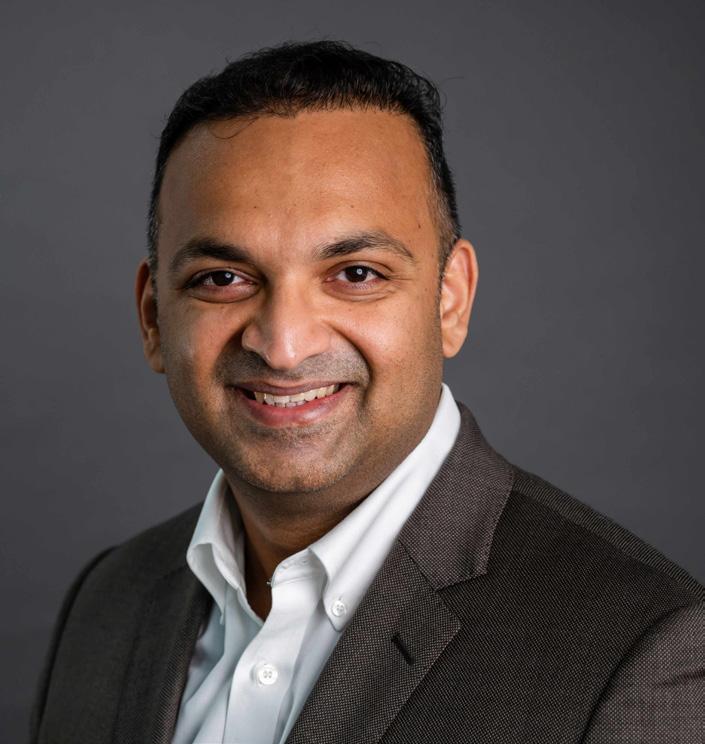
see. An obvious point, maybe, but one that has escaped the notice of many an organization. If this was true before pandemic lockdowns pushed us into the cloud en masse, it is doubly so now. Many enterprises do not, or cannot, gather data from third-party environments or the personal devices of remote-working employees. Lack of data equates to blind spots. Whether at rest, in transit, or in use, data, and the metadata it generates, must be captured. And this must happen wherever the data is — on premises or in the cloud, on hardware or on a virtual machine.
SecOps teams must be supported by processes, policies, and tools that give them unfettered access to all asset types; and this visibility must be maintained over time. If not, then analysts cannot be expected to effectively monitor all possible attack channels.
2. Threat intelligence
Extended detection and response (XDR) has become something of a household (well, boardroom) name — according to Trellix’s recent ‘Mind of the CISO’ research, 56% of organizations across the UAE and KSA already have XDR as part of their security strategy. Its fame comes from its ability to solve the point
solution problem and bring together disparate elements of cybersecurity at a time when the GCC is inundated with cyberattacks. But not all XDR is created equal, so when deciding which XDR solution is right for you, it is worth considering four key security pillars.
1. Visibility
You cannot detect what you cannot
In addition to visibility, SecOps teams must also have access to threat intelligence. This can take many forms, from the diligent investigations of the analysts themselves reviewing data from compromised endpoints to the external intel made available commercially or as part of an opensource or threat-sharing initiative. The indicators of compromise (IOCs) that result from intel exercises can be shared with different security controls for the purposes of detection and response.
VIEWPOINT
36 CXO INSIGHT ME SEPTEMBER 2023










If a SecOps team can efficiently ingest, share, and leverage threat intelligence across its security solutions — endpoint, data, email, cloud, and network — it will have taken the first step towards robust XDR. The team should also be able to generate threat intelligence through day-today operations. It is the only way to guarantee the ability to identify an active intrusion. Which brings us, neatly, to detection.
3. Detection
You cannot guard against what you cannot detect. Another obvious point that only stands because so many regional organizations find themselves with a detection shortfall. Organizations must review their tools and techniques across attack channels to ensure the SecOps team is covered for real-time action. We all know the GCC faces a skills gap in cybersecurity and that (apparently) cybergangs do not. This is a challenge. Since prevention is now all but impossible, well-defined detection and remediation tools are critical, as are the procedures that govern their use. Field-tested, automated playbooks should turn the SecOps team into threat hunters, capable of examining all data — whether stored, moving, or accessed — and determining whether a leak is happening.
The playbook should require alerts from endpoint, email, network, or cloud solutions to be instantaneously shared with the centralized data protection dashboard for real-time visibility. This allows the XDR solution to also detect lateral movement. Taken together, these detection capabilities allow the reduction of dwell time, which according to some reports can average as long as three weeks.
A strong XDR solution will be able to link events together to detect low and slow intrusions. This is where XDR proves to be more than the sum of its parts. Individual vendor solutions may not be capable of the same level of discovery. XDR, which brings these solutions together, garners more context and can tell analysts the full
story of what happened during a contained breach. This allows them to search for additional context among other affected systems or credentials. Working like this means policy wins over technology. A point solution may identify a weak signal, but this may be a ploy by an attacker to slip under the radar. If several point solutions identify weak signals and pass them along to a central decision-making apparatus, XDR will put several “weaks” together to deduce a “strong”. And so, what would otherwise have been a stealthy attack with weeks of dwell time is thrown into the light where SecOps can decide what to do with it. And so, we come to response.
3. Response
Today, given the level of stress faced by security professionals in the region, cybersecurity response has as much to do with triage as anything else. Given limited resources, how do you decide what to go after? With the rise of supply-chain attacks and the persistent headache of software vulnerabilities, XDR platforms present a much-needed respite from the triage issue. First, XDR automates the critical, manual investigative tasks and endures all the associated tedium and false starts on behalf of analysts. Secondly, it automates the playbook in the event of finding an anomaly. When alerts reach the analyst, they are significantly less likely to be a waste of their time. In other words, XDR alerts are more actionable.
It starts with an investigation. Having detected something truly worth pursuing, the XDR solution identifies IOCs such as hashes, links, IP addresses, domains, and URLs. It goes on to validate these IOCs against trusted sources. Once a malware strain is confirmed, XDR tries to identify other IOCs by allowing the sample to run its course inside a sandbox. By allowing it to exhibit its designed behavior, XDR can automatically sift out a range of other important information, such as which network connections the strain tries to make, and what registry
modifications and file drops it performs. All this information allows SecOps teams to scope the incident and detect lateral movement.
At this stage, the XDR platform will have singled out endpoints that may have been impacted by lateral movement, thus supplying analysts with actionable alerts. The platform would also be capable of automatically scanning the environment and performing updates such as endpoint security engines’ rulesets and policies and network solutions’ IOC catalogs. XDR would search for more IOCs in endpoints, SIEM solutions, firewalls, proxy servers, and DNS logs. At the end of the investigation, the level of data leakage will have been determined.
After the investigation, XDR moves on to containment and, if possible, eradication. It is capable of automatically containing infections at the endpoint level and removing or shutting down virtual interfaces. The platform will quarantine compromised endpoints in dirty VLANs or shut down switch ports. It can create prevention rules and policies in firewalls, proxy servers, and other solutions to render the malware useless for future campaigns. XDR can also enforce endpoint solution (or agent) installation on affected devices.
When the dust has settled, lessons must be learned. Reporting is also automated in XDR. Actions taken; hosts affected; URLs investigated; domains, IPs, files, and hashes probed. All are included, along with details of any data leakage and any changes made to policies.
Safe at last?
XDR is not an install-and-forget technology. It is a way of life —` a way of operating, a way of thinking. Just as XDR empowers constant vigilance, it also requires it. Roles, processes, information sharing, and organic updating of all of these must come together to ensure that the digital environment and all those who use it are safe today, tomorrow, and for the foreseeable future.
VIEWPOINT
38 CXO INSIGHT ME SEPTEMBER 2023
MUSEUM OF THE FUTURE
CONNECTING THE WORLD’S NEW LEADERS


The SuperBridge Summit ignites, connects, and unites futureminded, action-oriented leaders from the world’s fastest growing economies to explore the rise of new markets , fast track partnerships and collaborations on transformative opportunities in the Middle East, Asia, Africa, Latin America and the rest of the world.

500+
influential executives from the world’s top organisations.
70+
25+ visionary leaders from GCC, Asia, Africa & South America.
insightful multi-disciplinary sessions from 20+ countries.
KEY SPEAKERS
China
CEO, KARGOBOT CTO, DIDI AUTONOMOUS DRIVING China


SOUTHBRIDGE INVESTMENTS



Tanzania
and many more...
LIONEL ZINSOU Former Prime Minister Republic of Benin
DR. FRANNIE LÉAUTIER Senior Partner and CEO
DR. JUN MA Founder and President INSTITUTE OF FINANCE AND SUSTAINABILITY Former Chief Economist PBOC
DUBAI In partnership with
DR. JUNQING WEI
superbridgedubai@dwtc.com | superbridgedubai.com GET INVOVED
16 - 17 OCT 2023
RESHAPING BUSINESS COMMUNICATION
IN A WORLD WHERE AI HAS BECOME A UBIQUITOUS BUZZWORD, RESPOND.IO STANDS OUT AS A GAME-CHANGER IN THE REALM OF BUSINESS MESSAGING. WE SPOKE TO THE CEO OF RESPOND.IO, GERARDO SALANDRA, TO UNCOVER WHAT SETS THEM APART IN THE EVER-EVOLVING LANDSCAPE OF AI-POWERED MESSAGING PLATFORMS.
How does your AIpowered messaging platform differentiate itself from other solutions on the market?
AI is one of the biggest buzzwords words in the business world but while everyone is claiming to be an AI company, we have a clear differentiator: We combine years of R&D in business messaging with the latest stack of generative AI technologies.
Respond AI can optimize your conversation cycle as you can teach it your knowledge base and provide customers with accurate responses immediately. That’s the part anyone can do. What makes us unique is the core solutions we built first. For instance, it will allow you to pass the conversation over to an agent if the AI fails or if the customer demands human support. Our full suite of solutions addresses every possible scenario in a conversation and you can choose which tools to leverage and when.
The five years we spent building this core platform also ensure the AI integrates neatly with your business processes, workflows, and existing tech stack, as well as all the messaging channels customers are spending time
on. The value of AI is exponential but it needs a solid base like respond.io for substantial and reliable impact.
Can your platform be customized to suit specific industry needs or business processes?
Definitely. In our five years in the market, we’ve accumulated a vast repository of use cases and verticals that our horizontal solution supports. Respond.io is now an integral part of operations for thousands of customers in industries such as healthcare, e-commerce, logistics, and education.
Flexibility and customization are fundamental to our approach. We’re not an off-the-shelf solution. Rather, we focus on being able to address advanced, complex, and unique business use cases. If you have a vision, you can bring it to life with respond.io We not only provide you with a product but also offer the option of having a Customer Success Manager journey with you in building the best possible solution for your business needs.
How easily can your platform integrate with existing CRMs, ERPs, and other business systems?
Respond.io was designed to integrate seamlessly with your existing tech stack. We believe this is crucial for effective customer conversations and dedicated significant effort to building robust APIs. We also partner with leading integration providers Zapier and Make.com, which can be leveraged to integrate with over 5,000 apps, including Salesforce, Hubspot, Zendesk, Pipedrive, WooCommerce, Magento, and more. Finally, we support custom integrations to support niche or proprietary software you may be using.
How does your platform handle high volumes of messages and interactions without compromising performance?
Respond.io was purpose-built to handle high volumes of conversations. In fact, many of our customers migrated to us after experiencing frequent downtime on other software. We have a reputation for high performance, stability, and reliability.
Not only do we invest heavily in cloud computer technologies, but we’re also able to process over 100 million messages per month with Amazon Web Services and are a Meta and Viber partner for direct support access when necessary.
INTERVIEW
40 CXO INSIGHT ME SEPTEMBER 2023
How do you see the landscape of AI-powered business communication evolving in the coming years?
The market will be saturated with AI solution providers, but they may not understand business messaging. For conversations that generate results, you need to provide the best possible customer experience through a combination of workflows, business processes, AI, context from CRMs, and a robust reporting module. Crafting a customizable yet scalable experience like this is incredibly difficult. While there will be many imitators, they won’t be successful without a strong foundation in business messaging.
Meanwhile, businesses are often reluctant to adopt messaging as part of their customer strategy even though it’s ripe with opportunities. Handling the high volume of conversations generated on these channels is challenging, and businesses don’t want to sacrifice service quality or risk not meeting their SLAs. But that’s what this new wave of artificial intelligence is about. Imagine providing the exact same level of conversation quality at a much larger scale and at a lower cost. AI is finally at the stage where this is possible and the companies that adopt this first are
going to have a massive advantage over their competitors.
Can you explain the underlying technology that powers your AI capabilities?
Respond AI runs on a combination of technologies developed in-house and also by leading providers like Open AI. For instance, our technology lets you train the AI model using your knowledge base while Open AI powers its ability to respond to customer inquiries. We’re also looking to use LLMs like Meta’s Llama 2 and G42’s Jais, the most advanced Arabic LLM, to enhance our ability to address increasingly complex use cases.
Can you share examples of businesses that have successfully adopted your AI-powered messaging platform?
We currently serve more than 10,000 customers in over 80 countries and across a wide range of verticals.
Our customers include McDonald’s, British Airways, Klook, Decathlon, Roche and Bigo. We take pride in our ability to cater to the diverse needs of our customers and our commitment to delivering top-notch solutions has allowed us to establish strong
partnerships with renowned brands and organizations worldwide.
As we continue to expand our reach, we remain committed to providing exceptional service to all our customers, regardless of their size or industry. Our goal is to empower businesses with the tools they need to thrive in an increasingly competitive landscape.
What quantifiable benefits or improvements have these businesses experienced as a result?
Businesses have seen tremendous results within months of using respond. io. As respond.iosupports all popular messaging channels, provides flexible automation and integrations, and offers a comprehensive reporting module for visibility and accountability, businesses are able to achieve extraordinary outcomes, such as reducing first response time by over 80% and improving resolution time by 94%. This has led to CSAT scores as high as 93%.
We’ve even had customers triple their qualified leads over WhatsApp, double their monthly new customers, boost regional sales by 50%, and achieve 100% subscriber growth in just 2 months. Check out these and other incredible customer stories on respond.io

What levels of customer support and technical assistance do you provide to businesses using your platform?
Excellent customer service is one of the pillars respond.io was built on as we recognize that businesses rely heavily on our solution for customer conversations that generate revenue and other key results. We offer chat support 24 hours a day, 5 days a week, in multiple languages including English, Arabic, Spanish, simplified Chinese, and more.
To guide businesses in adopting respond.io as efficiently as possible, we’ve newly launched a 30-day onboarding program that will get you from zero to hero in no time at all. Meanwhile, Enterprise customers can count on the support of a Customer Success Manager in navigating the platform and developing tailored solutions for their specific requirements.
41 CXO INSIGHT ME SEPTEMBER 2023
UNLOCKING BUSINESS SUCCESS
Over the past few years, observability has evolved from a mere buzzword to a crucial component in modern ITOps. Customer expectations are skyrocketing, and even a few minutes of service disruption could prove disastrous for business. Implementing observability can help organizations prevent issues and provide a seamless customer experience.
In a recent study conducted by ManageEngine, over 51% of large enterprises stated that they plan to implement observability in 2023 to streamline their customer experience. But despite the growing interest in observability, 57% of organizations are still unfamiliar with its concept and fall short in their implementation. Before a business can leverage observability to achieve its goals, it is essential to first understand what observability is and why it’s vital for IT operations.
What is observability?
Observability defines to what extent a system or environment can be analysed through metrics, logs, and sources. Functionally, observability provides real-time visibility into the behaviour and performance of complex systems, allowing organizations to detect and diagnose issues before they affect operations.
Why organisations need observability Observability has become essential for organizations that wish to provide a flawless customer experience. It enables them to monitor their systems and detect issues proactively, and collect real-time data on the performance of their systems, applications, and infrastructure. This data can be used to identify potential bottlenecks, pinpoint the root cause of issues, and address them before they affect the customer experience.
Observability also enables organizations to adapt to changing business requirements by providing real-time visibility into system behaviour, allowing them to make informed decisions and quickly respond to changes. This also facilitates better cross-team collaboration within the organization and helps usher out siloed management methods.
Despite the benefits of observability, many organizations face challenges with its implementation. The most prominent challenge organizations face is a lack of understanding or unfamiliarity with the concept. This knowledge gap ultimately leads to organizations falling short of implementing observability, despite their interest.
To overcome the roadblocks to utilizing observability, organizations can follow several best practices for a seamless implementation:
Start small: Begin by identifying where exactly observability fits into your organization and the specific business goals you hope to achieve. You can also start by observing specific systems or applications and gradually expand to the rest of your infrastructure as you gain more experience and expertise.
Choose the right tool: Generally, a unified observability tool can be beneficial for most organizations. It provides a consolidated view of system performance and availability, improves collaboration, and is more cost-efficient than individualized tools. In the case of using multiple tools, it is important to choose tools specific to your business requirements and needs.
Encourage cross-team collaboration: Collaboration between IT operations, development, and business teams ensures observability efforts are aligned with business needs. This also breaks down data silos and provides greater visibility across the organization.
Ultimately, observability is a critical concept that businesses must embrace to achieve better visibility into their IT operations. By becoming familiar with the concept of observability and bridging the knowledge gap, organizations can reap its benefits and set themselves up for success in the years to come.

VIEWPOINT
BHARANI KUMAR KULASEKARAN, PRODUCT MANAGER AT MANAGEENGINE, ON LEVERAGING OBSERVABILITY TO DRIVE BUSINESS SUCCESS
42 CXO INSIGHT ME SEPTEMBER 2023
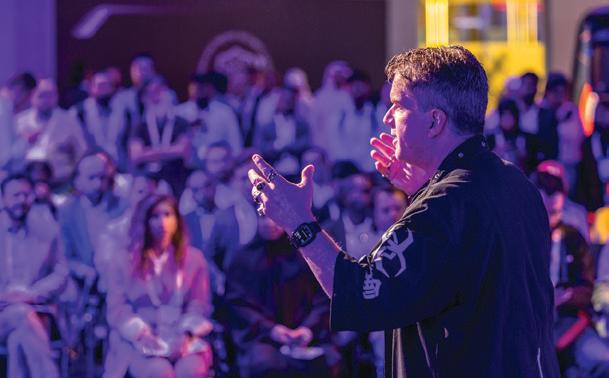
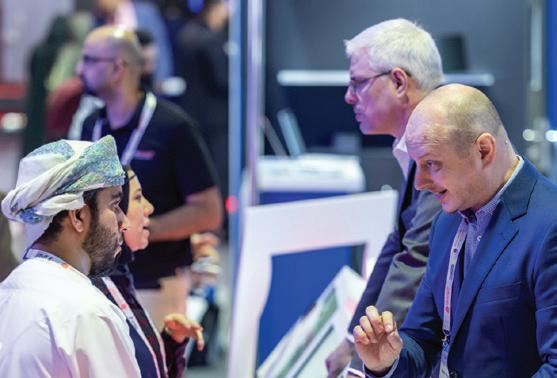



SUSTAINING INNOVATION
JAMES HARVEY, CTO ADVISOR, CISCO APPDYNAMICS, ON FIVE PREREQUISITES TO FOSTERING INNOVATION ON A MORE SUSTAINABLE BASIS

and security that underpins these enduser experiences.
Given how rapidly the space has evolved, most IT teams don’t yet have the right tools to cut through this data noise, nor do they have unified visibility across hybrid environments. This is a major problem as an increasing number of applications run across both cloud native and legacy, onpremises technologies. This obscures the IT department’s view of the entire application path, making it difficult for them to detect issues and understand root causes.
The pace of digital transformation is constantly accelerating, as modern applications stacks give organizations the ability to innovate at ever greater speeds. IT teams are deploying no code and low code platforms to dramatically increase release velocity and respond to constantly evolving customer and employee needs.
Recent research from Cisco AppDynamics, The Age of Application Observability, highlights the extent to which cloud native technologies are transforming how organizations approach digital transformation. Technologists in the UAE report that 49% of their innovation initiatives are
now being delivered with cloud native technologies, and they predict that this figure will steadily rise to 58% over the next five years. This indicates that most new digital transformation programs will be built on cloud native technologies by 2028.
As beneficial as modern application stacks are, there is no escaping the complexities they add to IT environments. Cloud native technologies are bringing soaring levels of complexity into IT departments, with massive volumes of data being spawned by microservices and containers. So, while business users focus on slick functionality, IT teams must work tirelessly in the background to manage the application availability, performance
The inescapable truth for most technologists is that it’s becoming far harder to troubleshoot issues before they impact end user experience and there is, therefore, growing concern about the potential consequences of this — productivity losses, customer dissatisfaction, and impact on the bottom line.
Unsurprisingly, approximately half of all surveyed technologists from the Emirates are fully confident that their organization currently has the right skills, processes and tools in place to manage application availability, performance and security in a sustainable way. For all the advancements made in speeding up application development times, organizations are undermining their investments in digital transformation because their IT teams aren’t in a position to deliver seamless digital experiences to customers at all times.
CIOs and technology decision makers must address this situation before it derails their innovation programs, and
VIEWPOINT
44 CXO INSIGHT ME SEPTEMBER 2023
our research highlights five key areas they need to prioritize to achieve a more sustainable approach to innovation.
1. Optimize application performance with observability
Almost all (99%) technologists in the UAE point to a critical need for their organization to move from a monitoring approach to an application observability solution in order to manage multi-cloud and hybrid environments.
IT departments need an application observability solution which has the flexibility to span across hybrid environments, ingesting and combining telemetry data from cloud native technologies and data from agent-based entities within on-premises applications.
By arming themselves with application observability, IT teams can access real-time insights into application availability and performance across their hybrid environments. And crucially, they can correlate IT data with real-time business metrics. This empowers them to identify and prioritize the most pressing of issues.
2. Necessary investments in the right skills
The growing utilization of cloud native technologies requires IT teams to learn new skills and embrace new ways of working. Consequently, we’ve seen the emergence of new teams, such as Site Reliability Engineers (SREs), DevOps and CloudOps in recent years.
To serve these new functions, IT leaders need to recruit, develop and retain highly quality IT talent. And this applies across the board, whether it’s developers, operations, or security experts, across both cloud native and on-premises technologies.
3. Create a collaborative culture
At a point when having a unified view of the organization’s sprawling IT infrastructure is more important than ever, it is disheartening to see that as many as 78% of UAE technologists report an increase in silos between IT teams as a result of managing multicloud and hybrid environments.
The importance of breaking down any silos between people, processes, and data cannot be understated. It is imperative to reduce the likelihood of application performance and security issues, and to retain their best talent. 89% of UAE technologists report that the persistence of silos are already resulting in IT talent leaving their organization.
Here too, investing in application observability provides a foundation for greater collaboration between teams within the IT department, and allowing all technologists to come together around a single source of truth. IT leaders need to implement new processes and structures and provide training so that technologists can leave behind entrenched mindsets and embrace new ways of working.
4. Create a coherent, common vision
To foster a more collaborative approach, IT leaders should be looking to create and communicate a shared vision for IT and innovation within the organization. This means inspiring and incentivizing all technologists around shared KPIs
and business objectives, rather than just individual and team goals.
With the constant need to expand their knowledge and skill sets being a defining characteristic of their profession, most technologists are eager to work in new ways and with new people. They know that they need to adapt their approach and embrace change to become more rounded IT professionals and accelerate their careers.
5. Measure and showcase the value of innovation
To be impactful, innovation must be strongly tied to business outcomes. 84% of local technologists report that they’re coming under increasing pressure to validate the impact of their cloud investments. And with economic conditions likely to remain challenging for some time to come, there is a real possibility that IT leaders could see their innovation budgets cut unless they can prove the value that they’re delivering to customers and the business.
By implementing the right application observability solution, IT teams can generate business transaction insights in real-time, and then view them in business-level dashboards to understand and report on the value that their innovation programs are delivering. It means they can make rapid but informed decisions on where to focus investments based on what will have the biggest benefit for customers, employees, and ultimately, the business. And this in turn will enable them to validate their innovation investments and secure future budgets.
We are already starting to see that organizations are recognizing the need for new tools and processes in order to embed a more sustainable approach to innovation. This is evidenced in the fact that 91% of UAE technologists claim that observability is now a strategic priority for their organization.
With a robust application observability strategy in place, IT leaders will have the platform they need to innovate at pace; meeting demands for accelerated digital differentiation, while also ensuring that applications are always optimized.
45 CXO INSIGHT ME SEPTEMBER 2023
IT DEPARTMENTS NEED AN APPLICATION OBSERVABILITY SOLUTION WHICH HAS THE FLEXIBILITY TO SPAN ACROSS HYBRID ENVIRONMENTS, INGESTING AND COMBINING TELEMETRY DATA FROM CLOUD NATIVE TECHNOLOGIES AND DATA FROM AGENT-BASED ENTITIES WITHIN ON-PREMISES APPLICATIONS.
MANAGING CLOUD COMPLEXITY
REGIONAL IT DECISION MAKERS ARE FACING A DOUBLE WHAMMY OF GROWING COMPLEXITY AROUND CLOUD PLATFORMS AND CHAOS AND VOLATILITY IN THE MACRO ENVIRONMENT. AVINASH GUJJE, PRACTICE HEAD- INFRASTRUCTURE FROM CLOUD BOX TECHNOLOGIES PROVIDES GUIDANCE TO REGIONAL ENTERPRISES ON THE WAY FORWARD.

globally, in triple digits.
While investments being made by cloud hyperscalers creates significant opportunity for supporting innovation and digital transformation inside regional enterprises, it is also creating challenges for IT decision makers inside regional enterprises. Increasing complexity in choice around offerings, platforms, services from cloud hyperscalers and even cloud service providers is challenging IT decision makers in regional enterprises.
applications in the nineties.
Virtualization and virtual machines disrupted legacy server architecture in the 2000s. And now cloud-native infrastructure is creating tectonic disruption to all existing platforms and industries.
Gartner defines cloud-native as something created to enable cloud characteristics. Cloud-native infrastructure is used to deliver platforms with agility that mirrors the agile processes inside cloud-native applications. There are different ways to deploy cloud-native infrastructure, but large-scale cloud-native initiatives will be based on containers and Kubernetes.
Gartner estimates the pandemic helped the global IT industry leap forward by almost seven years. However, the current macro environment continues to be one, mixed with volatility, uncertainty, complexity and ambiguity (VUCA).
For most diners, a large and complex menu can be an intimidating opening into the restaurant. While choices are good, too many choices can be overwhelming, confusing and time consuming for most diners to meander through. The next step would be to ask the host of the restaurant to recommend their choice from the menu. But imagine if the host themselves starts playing the game of alternatives with diners. That would leave the diners in a very uncertain state.
A somewhat similar situation faces regional IT decision makers as they approach the menu of on-demand, pay as you go offerings, from today’s cloud hyperscalers. Cloud consumption in the region, whether public cloud or private cloud continues to grow in double digits. Some global hyperscalers, that have set up cloud regions in GCC countries, are even claiming that the Middle East is demonstrating the fastest growth
IT decision makers in regional enterprises therefore need to engage with specialized cloud partners to assist them through the suggested action points listed below:
#1 Invest in developing an end-toend view of the industry and each cloud service provider.
#2 Prioritize the innovation areas that are of importance to the enterprise today and tomorrow.

#3 Prioritize building skills in those areas either through internal investments or through partnerships with specialized cloud partners.
#4 Increase the engagement with business decision makers and business operations to align technology investments with the most suitable business areas and to generate the best return.
The global IT industry has gone through four distinct waves of platform disruption. The first was the entry of minicomputers in the seventies that disrupted monolithic mainframes. Client server architecture including commoditized PCs and packaged software disrupted minicomputers and OS driven
IT decision makers in regional enterprises must accept that uncertainty will continue to rule the outcome of mid to long term digital transformation projects that they initiate in these volatile conditions. Decision makers who are used to exert control and delivering predecided outcomes will be challenged by the prevailing influence of chaos. VUCA is here to stay and will impact digital transformation projects.
Here are some initiative-taking steps and considerations to keep in mind:
• IT decisions makers need to accept chaos and the limitations of executive control.
• By embracing chaos enterprises can proactively consider its impact in longer term projects.
• IT decision makers should not aim to control the output of longer-term digital transformation projects.
• IT decision makers may underestimate the positive and negative impact of the unknown on longer term projects.
However, IT decision makers must maintain a high degree of order and stability in their projects including clarity of strategy, well being of people, governance and productivity.
VIEWPOINT
46 CXO INSIGHT ME SEPTEMBER 2023














The Largest Tech and Startup is now Even Bigger Event in the World, INDEPENDENTLY RATED AS THE BEST TECH EVENT IN THE WORLD World’s Best Scan the QR Code for Registration 16 - 20 OCTOBER DUBAI WORLD TRADE CENTRE MONDAY 11 AM - 5 PM TUE - FRI 10 AM - 5 PM SUNDAY 11 AM - 6 PM MON - WED 10 AM - 6 PM DUBAI HARBOUR 15 - 18 OCTOBER NOW AT #EXPANDNORTHSTAR #GITEXGLOBAL ORGANISED BY THE YEAR TO IMAGINE IN EVERYTHING
HP has launched HP Pavilion Plus 14-inch Laptop PC and the new HP Pavilion Plus 16-inch Laptop PC –HP’s first 16-inch Pavilion Plus – delivering high performance, new features, and a larger screen option to power your ambitions in style.

With signature style and intelligent enhancements, HP’s updated Pavilion Plus portfolio features:
• The latest processers from Intel (14-inch and 16-inch) and AMD (14-inch only) to create more, stay connected, and stream efficiently on Wi-Fi 6E.
• Smooth and sharp visuals across gaming, entertainment, and presentations on an Eyesafe certified screen, complemented by off-screen details like a large-font, high-contrast keyboard for better visibility.
• Intuitive tools to command the virtual room, including a 5MP camera and dual array mic, and a manual camera shutter for more peace of mind on “off-camera” days. Log in quickly with the heightened security of Windows Hello face recognition, and leverage enhanced video conferencing capabilities with HP Presence.
• A full-metal chassis in sleek colors, created for style and sustainability. The 2023 Pavilion Plus laptop portfolio uses 20% post-consumer recycled plastics and 50% recycled metal for an EPEAT Gold Registered and ENERGY STAR Certified design.
The newest Pavilion Plus 14 is constructed for a dynamic life, with lightweight configurations starting at just 3.04 lbs. Enjoy battery power for up to 13 hours of video playback in up to 2.8K OLED clarity while IMAX Enhanced takes your entertainment experience to the next level. With two options powered by up to a 13th Gen Intel Core™ i7 Processor and up to an AMD Ryzen 7 7840H Processor respectively, anyone can choose the perfect 14inch model to fit their lifestyle.
The Pavilion Plus 16 introduces a 16-inch 2.5K WQXGA displayin a n Intel Evo Certified design, fueled by a 13th Gen Intel Core i7 Processor option to tackle every task on a more immersive screen. Bring imagination to life in precise detail with up to NVIDIA RTX 3050 Graphics while 120Hz Variable Refresh Rate technology provides optimized resolution and maximized power efficiency. And power your pursuits with up to 11:45 hours of battery life.
PRODUCTS
48 CXO INSIGHT ME SEPTEMBER 2023
Kingston IronKey D5005
Kingston Digital Europe, a flash memory affiliate of Kingston Technology Company, launched the Best-in-Class Kingston IronKey D500S, hardware-encrypted USB flash drive providing military-grade security for classified data in transit.

D500S is FIPS 140-3 Level 3 (Pending) certified with new enhancements from NIST requiring secure microprocessor upgrades for stronger security and attack protections for government and military use. The drive self-tests upon bootup and includes thermal and voltage protection to automatically shut down when certain threshold is reached.
Waterproof, dustproof, shock and vibration resistant to Military Standards, crush-resistant and epoxy-filled, D500S rugged zinc casing protects internal components from penetration attacks.
The Multi-Password option with Complex or Passphrase mode allows users to take ownership over their data, making it easier to remember the password to unlock the stringent security. Admin can reset a User password and enable a One-Time Recovery password to restore access should User password be forgotten.
their competitive edge. It is also a Dual Ultra-HighDefinition (DUHD) screen and features a suite of high-speed connectivity options.
The 1000R curvature in the 57-32:9 screen is as wide as two 32” UHD monitors, wrapping around users with pin-sharp images and a wide field of view, immersing them in their games like never before.
Quantum Matrix Technology powers Samsung’s Quantum Mini LED lighting in the screen, which offers smaller, more discrete dimming zones. The result is a better distinction between light and dark areas of the screen, with sharp contrast and less blooming.
The gaming performance matches the level of visual quality to help gamers meet their full potential. The 240 hertz (Hz) refresh rate and 1ms gray-to-gray (GTG) response time deliver less blur and minimized ghosting, allowing gamers to enjoy a smooth gaming experience. Plus, AMD FreeSync™ Premium Pro syncs the screen for a stable, lag-free picture.
Samsung Gulf Electronics has announced the newest addition to its Odyssey monitor series, the Odyssey Neo G9 57, expanding its monitor performance leadership in the region.
It is designed to deliver groundbreaking visual experiences for gamers looking to enhance performance and sharpen
The Odyssey Neo G9 57” offers VESA-certified DisplayPort (DP) 2.1 connectivity, which facilitates smooth gaming, efficient video playback and the Neo G9’s DUHD resolution up to 240Hz. In addition to DP2.1, the Odyssey Neo G9 57” also offers HDMI 2.1 and a USB hub, so gamers can hook up all their devices and elevate their game with less mess.

49 CXO INSIGHT ME SEPTEMBER 2023
NAVIGATING THE DIGITAL DILEMMA
SUNIL PAUL, MD OF FINESSE, ON ICT’S CLIMATE IMPACT AND THE QUEST FOR NET ZERO

trajectory, on the back of big data and AI, the Internet of Things, blockchain and cryptocurrencies, suggests that its share of global GHG emissions will only increase further in the coming years. This presents a pressing challenge, particularly in the context of global efforts to combat climate change.
· Identifying new ways to lower energy use at its corporate facilities.
· Moving its entire supply chain to clean power.
· Investing in technological improvements to processes and materials needed for its products.
The Information and Communications Technologies (ICT) sector is undeniably a driving force behind economic growth, digital transformation, innovation, and global connectivity and collaboration. However, as with most advancements, these advantages are not without their drawbacks.
While ICT is driving wide-ranging efficiency and productivity improvements in other sectors, while becoming more efficient, its share of global greenhouse gas (GHG) emissions has grown as increased efficiencies push demand.
According to data from the International Telecommunications Union (ITU), the ICT sector, which encompasses telecommunications, computing, and the Internet, is responsible for approximately 2 to 2.5 percent of GHG emissions, equivalent to nearly 1 Gigatonne of CO2.
A team of researchers from Lancaster University and sustainability consultancy
Small World Consulting Ltd calculated that ICT’s true proportion of global GHG emissions could be around 2.1-3.9%, putting it above the aviation industry, which is about 2% of global emissions.
According to the IEA, data centres and data transmission networks each account for 1-1.5% of global electricity use. To achieve Net Zero by 2050, the IEA notes the industry needs to reduce its emissions by 50% by 2030.
However, the sector’s growth
With COP28 in Dubai a little more than a month away, the setting is perfect to examine the ICT sector’s role in the context of global efforts to combat climate change. While the sector is known more for the technologies, data, and solutions that it provides to address climate mitigation and adaptation efforts, it has also taken upon itself the responsibility of reducing its own carbon footprint without waiting for government mandates.
Allianz Research said in a report issued in July 2023 that the ICT sector’s carbon footprint can be reduced through the adoption of renewable energy sources and energy-efficient practices. Reducing the remaining emissions is achievable through the optimisation of the product life cycle, involving evaluations of material selection, design decisions, manufacturing, and transportation, with help from regulations or incentives to drive changes in consumer behaviour toward reducing emissions from user devices.
Major companies within the sector are taking steps to curb their GHG emissions. A study by BNEF found that Big tech firms were the top corporate clean energy buyers in 2022. Amazon led with 10.9 GW of PPAs signed in 2022, followed by Meta (2.6 GW), Google (1.6 GW), and Microsoft (1.3 GW).
Google, Apple, Microsoft, and Facebook have committed to net zero targets by 2030. In July 2020, Apple unveiled its plan to become carbon neutral across its entire business, manufacturing supply chain, and product life cycle by 2030. Key elements of its strategy include:
· Designing low GHG products.
Intel has pledged to reach netzero GHG emissions in its worldwide operations by 2040 while enhancing energy efficiency and reducing the carbon footprint of its products. By 2030, the company aims to attain 100% renewable electricity usage across global operations.
In September 2020, Google announced that it had wiped out its entire carbon footprint by investing in high-quality carbon offsets. The tech giant has set an ambitious goal to operate on 24x7 carbon-free energy by 2030, which means it will operate every hour of every day with carbon-free electricity.
Microsoft has committed to being carbon-negative by 2030. The company also claims that by 2025, it will remove from the environment all the carbon it has emitted directly or by electrical consumption since it was founded in 1975.
Amazon has committed to be net-zero carbon by 2040, as well as powering its operations entirely with 100% renewable energy by 2025.
At COP28, ITU is rallying partners from the tech industry to help drive Green Digital Action.
However, it is also true the commitments and pledges are voluntary rather than binding. As the Lancaster University-Small World Consulting study noted, industry self-regulation may not be sufficient to bring about the emissions reductions needed to reach net zero by 2050. The study recommends that the ICT sector and policymakers formulate a plan in that direction, and second, the sector needs legally binding net zero targets that also cover their supply chain emissions.
BLOG 50 CXO INSIGHT ME SEPTEMBER 2023
SIMPLE. POWERFUL. SECURE.
» Over 300,000 customers in 190 countries from SMB to Fortune 500®
» 96% of the Fortune 500 are customers
» 50+ IT management products solarwinds.com

Join us at GITEX! | Dubai 16-20 October | Stand H7-F50

































 Sanjay Verma
Sanjay Verma









 Rami Riad Mourtada, BCG Stephen Gill, Heriot-Watt University Dubai Ayman El Sheikh, Red Hat
Rami Riad Mourtada, BCG Stephen Gill, Heriot-Watt University Dubai Ayman El Sheikh, Red Hat

































































